EXCLUSIVELY FOR RAIL INDUSTRY LEADERS
Mark Thurston
Providing a platform for a career in rail Andy Doherty The ‘one-stop shop’ for railway innovation

Steve Rotheram Delivering on a promise Maggie Simpson The highs and lows for rail freight


Providing a platform for a career in rail Andy Doherty The ‘one-stop shop’ for railway innovation

Steve Rotheram Delivering on a promise Maggie Simpson The highs and lows for rail freight





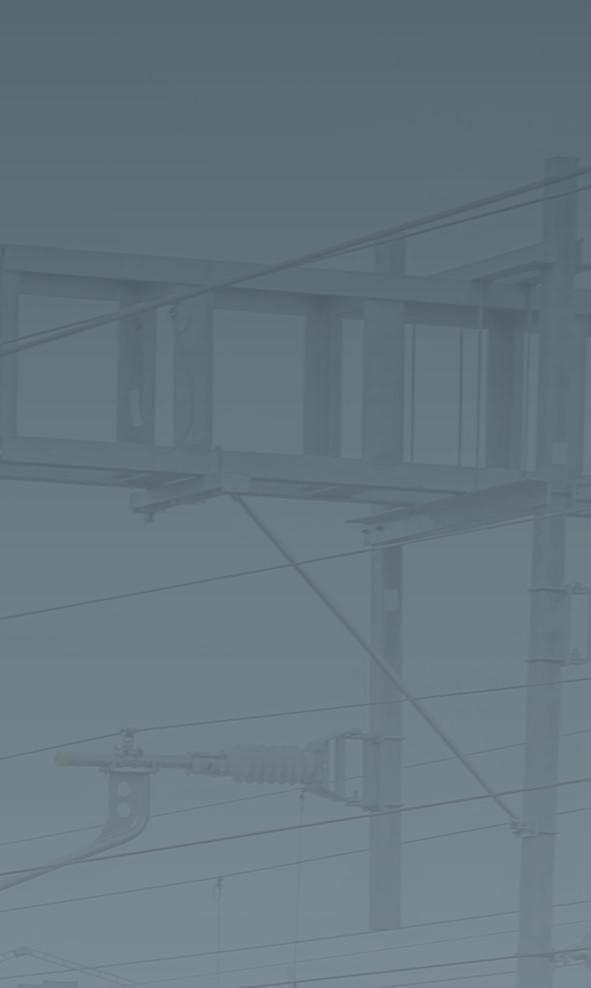


































































Iwould like to wish all our readers a warm welcome to the latest edition of Rail Director.


Where do I start on the political events of the past few weeks? As I put pen to paper, we have just seen Rishi Sunak invited by King Charles III to form a government and, following this, Rishi has announced that Mark Harper will take on the role of Secretary of State for Transport. There is a lot going on in the railways, so I wish Mark the best and hope he will lead from the front in getting a handle on the issues facing the sector and helping push forward rail reform.
Away from the politics, a topic I was keen to touch on in my editorial was this month’s fantastic Rail Wellbeing Live. This was due to feature more than 60 speakers and 50 pick ’n’ mix sessions to choose from, including high-profile speakers such as musician Professor Green, television personality Gail Porter, war veteran Simon Weston CBE and hypnotist Paul McKenna.
It is heartbreaking to read that one in three rail workers may meet the criteria for a mental health condition and I truly believe events such as Rail Wellbeing Live make a massive difference. Hopefully they will encourage more people to speak out about the struggles they are facing. After all, a problem shared is a problem halved, so why, when as an industry we work together to keep trains moving and projects progressing, shouldn’t we do the same to help colleagues through their own personal struggles?
If keeping up with the politics hasn’t kept me busy enough, this month has been my first true taste of faceto-face interaction with the industry (having started Rail Director during lockdown). It was a delight to attend the Rail Forum annual conference, featuring a fantastic range of speakers from HS2 boss Mark Thurston to the now former Rail Minister Kevin Foster!
It was also nice to see people in the flesh, who up until then I’d seen only on a video call. But now let’s turn our attention to this magazine, and I was delighted to get the chance to speak with Lucy D’Orsi, the Chief Constable of British Transport Police, who is featured on this edition’s cover. We covered a vast range of topics during the chat, but what was heartening to hear was her passion to be a force of good for the industry and to use all means possible to keep users of the railway and communities along the line safe.
Lucy joins a host of fascinating characters in this month’s Rail Director, including Network Rail’s mobile operations manager Julian Weatherall, who shares details of his career, particularly his time as an emergency planning specialist. I’m also pleased to feature the latest column by award-winning railway chaplain Mike Roberts (he was recognised for his Outstanding Personal Contribution at the recent National Rail Awards), in which he looks at how we recognise and respond to trauma.
As always, a big thanks to everyone who has made this edition possible. I hope you all enjoy reading it as much as I’ve enjoyed pulling it together. Thanks so much for your continued support on this incredibly exciting journey.
Please do contact me or the rest of the team for more information on all aspects of our brand. After all, collaboration is the key to our industry thriving in the future.
All the best,
Danny Longhorn Editor
Rail Director magazine is part of the Business Daily Group of companies, which includes the hugely popular railbusinessdaily.com. We
more than 70
a week to +70,000 rail industry professionals who now subscribe to our 7am daily newsletter. Please subscribe and encourage your colleagues and team members to do the same. It’s free and it’s easy: www.railbusinessdaily.com. This is the very best way to keep abreast of what is happening on Britain’s railways. There is a digital

It is heartbreaking to read that one in three rail workers may meet the criteria for a mental health condition
Policing the railways in the future 5
British Transport Police’s chief constable Lucy D’Orsi on ensuring the organisation is a relevant force for the future, making the best use of technology and creating a hostile environment for criminals

Maximising the impact of 10 HS2’s arrival in the Midlands
Construction of Phase One of HS2 from London to Birmingham is now well under way and there are signs that the prospect of the new high-speed line is already bringing higher levels of growth to the West Midlands
Raising the flag in safety 14 Mobile operations manager Julian Weatherall discusses his life in rail, the future of the Safety Task Force, and cricket umpiring for celebrities
Delivering on a promise 18 Liverpool City Region Mayor Steve Rotheram says they will be putting the public back in public transport with the arrival of new trains
News 20
Transform your ‘people 22 approach,’ shoestring style
Amy Blick is an experienced HR specialist, the founder of ExhilHRate. She is internationally renowned for her work with global brands and SMEs. In her first of three columns for Rail Director Amy looks at how you bring your people closer to the heartbeat of your business
ScotRail’s first deaf modern apprentice 24 Ross Henderson has seen his confidence grow and thrives on social interaction since starting a customer service modern apprenticeship with the train operator
Providing a platform for a career in rail 26 Europe’s biggest infrastructure project has got more than 950 apprentices working on the project. CEO Mark Thurston explains why it is so important the project offers opportunities
Lorry partially demolishes bridge in Rutland 30 Bridge strikes are, sadly, all too common. Photographs of buses and high-sided lorries that have been driven under low bridges are often seen on social media and in the press
New fleet for West Midlands Railway 34 Andy Street, Mayor of the West Midlands, describes the Class 196s as a vital element of the golden era for rail travel in the region
Community projects bringing people together 38 through rail recognised at national awards
An inspiring range of initiatives delivered by community groups, partnerships, and volunteers across Britain have been celebrated at the 2022 Community Rail Awards
The ‘one-stop shop’ for railway innovation 42 Andy Doherty, chief technology officer for the Global Centre of Rail Excellence, discusses the track ahead for the industry’s game changer
The urgency to secure critical rail systems 46 Niels Haverkorn, SVP and general manager for Connected Transport at Irdeto, writes about the Cyber Resilience Act and the common standards for cybersecurity services
When trauma clouds gather 48 Railway Chaplain Mike Roberts explains how we recognise and respond to trauma is key to how we move forward and make our industry stronger and healthier
Through running on the Elizabeth line 52
In the next phase of the Elizabeth line’s opening, from 6 November trains are running from the national network into the Central Section. Richard Clinnick reports on what this development means, and what happens next
Inclusivity for a better, simpler railway 58 Shane Andrews, Tracey Barber, Pankaj Kapoor, Mike Roberts and Heather Waugh were part of a panel discussing the importance of inclusivity
Planning is more important than 60 ever in times of uncertainty
Stephen Mackinnon, head of accountancy and tax at MPA, writes about staying focused on long-term goals
RBD Community celebrates 62 300th member milestone

The RBD Community has plenty to celebrate this month. Eli Rees-King explains more

International News 64
HS2 offers industry placements 66 to T Level students


In a bid to provide young people with the skills that industry needs, the government launched T Levels in September 2020
Three decades of Rail Freight 68 Group annual conference
Maggie Simpson OBE, director general of the Rail Freight Group, speaks about the highs and lows for rail freight
Movers and Shakers 69
From running trains to running a marathon 74 Hull Trains’ Mike the Knight has completed the London Marathon, just missing out on a Guinness World Record
The UK railway is one of the safest in the world with about 29 crimes per million passenger journeys. It’s a statistic British Transport Police’s (BTP) Lucy D’Orsi is rightly proud of, particularly taking into account the team covers the biggest geographical area of any police force in the UK – 20,000 miles of track and 2,500 stations.

But the chief constable isn’t getting complacent and 18 months into her tenure in the job and she is leading the force in looking at new ways to reduce these figures further, ridding the railways of crime, while at the same time keeping the vulnerable safe.
“I’m incredibly proud of the work and passion shown by my colleagues at BTP and the fact that the chances of being a victim on
the railway are so tiny in percentage terms,” she said. “We are one of the safest transport systems in the world and as an organisation we’ve got a very big heart and a very big ambition to be a real, relevant force for the future.

“But we have to remember there are still those crimes that have a real high harm impact on victims.

British Transport Police’s chief constable Lucy D’Orsi on ensuring the organisation is a relevant force for the future, making the best use of technology and creating a hostile environment for criminals
Drugs are being transported on trains, metal thefts are occurring, vulnerable people are being targeted, and we need to stop all that from happening.
“Everybody wants to see cops, but the presence of policing doesn’t necessarily directly collate to the absence of crime. We are looking at how we can make better use of data and technology. I want to create a hostile environment for criminals, protecting vulnerable people and bringing offenders to justice. To do that we need to work as a community with the whole rail industry and passengers to ensure it is a difficult place for people to come and commit crime.”
Lucy’s rise to the top has been three decades in the making. She joined the Metropolitan Police Service in 1992 and has gone on to work across multiple London boroughs, holding the role of Commander East London and Counter Terrorism Policing’s senior national coordinator for protective security and preparedness.
“I was involved in giving evidence at the Manchester Arena inquiry,” said Lucy, who was in counter-terrorism policing for four-and-ahalf years. “Some of the learning that has come out of this in terms of situations where you have multiple people trying to deliver security and safety in a single location is very transferable to rail.
“It needs to be more integrated and coordinated and the rail industry would benefit from having a single guiding mind around security. A key challenge is working closer and in a more integrated way with the industry to deliver effective security across the network, because it’s not always going to be policing that delivers the security.
“It does not make sense to have operators with their security guards, Network Rail with its own security and retailers at commercial centres having their own staff and us all not working together and sharing resource and data.
“There is a significant investment of money around security, so we need to work together to ensure it is being used in the best possible way to keep the public and people who work on the railway safe. We have several pilots taking place at the minute looking at the integration of security.
“It is important that in terms of rail reform, we keep alive the discussion about security as it’s never as effective trying to retrofit it compared with designing it in with the process from the beginning; plus it is generally cheaper.”
Lucy’s role involves providing effective
leadership to a large, dispersed workforce of more than 5,000 police officers and staff across England, Scotland and Wales, as well as leading constructive partnerships with the Department for Transport, the devolved administrations and the rail industry across Great Britain.

“But I do love my job and it is fantastic to be Chief Constable, although I never had a focused plan to work my way up to the job, I just have always come to work to be the best that I could be and deliver a service to the public.
“As I say to my daughter, pick a job that you’re going to enjoy because if you enjoy it, you’re inevitably going to be better at it. I’ve never got up in the morning and not wanted to come in to work. Public duty has always been part of my upbringing and I’ve had some great opportunities, some of it pushing me out of my comfort zone, but if you stay in your comfort zone you should never be surprised if stuff remains the same.”
“When I first took on the role of Chief Constable it took a little bit of getting used to and when people called me Chief I almost wanted to look over my shoulder,” said Lucy, who prides herself on putting the public at the heart of everything she does – inspired by her parents, who were both social workers.
“There are some real high moments in policing which leave you bursting with pride, and then there are other times where you know you’ve done a fantastic job, but you’ve seen stuff that you would never want anybody to be exposed to; that can be really difficult.
“I’ve dealt with death and horrible criminals who showed the real depravity of society and those are the extremes of policing. We do run into stuff in policing where most people’s natural reaction would be to run away.
Lucy is currently developing BTP’s strategy and leading the organisation in delivering its service more economically and efficiently, while simultaneously enhancing its reputation further for its innovative and bold approach on the national policing stage.
Among the potential initiatives is having the ability to track suspicious rail passengers through analysing Oyster card journey data, with BTP pilot studies looking at anomalous behaviour that can be a precursor behaviour for suicide.
“The idea is to use artificial intelligence to say this is how people tend to behave prior to considering whether to take their own lives,” she said. “You load that data onto a system and then it can help guide whether it would be helpful to have an intervention. It is about making sure we’re in the right place.
The rail industry would benefit from having a single guiding mind around security
“Let’s say someone taps on the underground with an Oyster card and taps out six hours later, we know that is anomalous data and we should use the data to tell us that. My view is that person is potentially lost or vulnerable, or potentially a pickpocket or a predatory sex offender.
“We need to be bold and think more about data and technology. I do not want us to be a police force where our impact and value are defined by the number of police officers we employ. I would like to see us flexing our budget to support the development of technology to be a blend of physical and digital security to create a hostile environment for criminals.
Lucy continued: “We need to develop strong data sharing agreements. Data is a really precious thing so it does need to be used really carefully, and it needs to be very clear it would be used for policing purposes and we should only ever keep it for as long as we need to look at anomalies.
“We’re not looking at lifetime surveillance of individuals and their cards. It does polarise




public opinion, but we have a finite number of resources and we want to protect millions of passengers, making it a safe environment for those who work on and use the railway.”
It is the topic of ensuring that BTP officers are deployed effectively that drives the Chief Constable’s enthusiasm for exploring the use of technology across the network.
“A future state for me is that when there is a trespasser by the track, instead of deploying officers or maybe a specialist dog to go trackside, we launch and fly a drone from which

the footage will be beamed into a control room and then a decision will be made by Network Rail and ourselves as to whether the railway can reopen,” she said.
“We don’t have the consistency of CCTV across the network we would like and there are some places where we know passengers feel very vulnerable, such as remote stations late at night. The solution isn’t necessarily to place a cop there, because we know that there’s very little crime that happens, but we may well have a tethered drone downloading CCTV to provide some reassurance. It’s about thinking about the new world.”
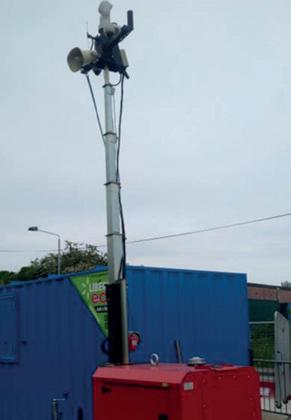
Earlier this year BTP launched ‘Speak Up, Interrupt’ which aims to empower bystanders and witnesses of all forms of inappropriate sexual behaviour on the network to report incidents or safely intervene where they can, while the force continues to boost specialist patrols and target hotspot locations.
Reports of sexual harassment and sexual offences to BTP have risen by 175 per cent since before the pandemic (2019/20 compared to 2021/22).
Established in 2017 as a security consultancy company.








Triple Threat Security soon escalated into a security company that could provide a vast range of services, utilising skill sets from the vast background of the veteran community.


Triple Threat Security Ltd offers bespoke services throughout the UK, such as security services and facility management.

It has been seen as a positive with more people aware that the behaviour isn’t acceptable, and more confident in reporting it to police, which can be done by texting 61016 or via the new app ‘Railway Guardian’.
“Ultimately the ambition for me as Chief Constable is that the chances of being a victim of crime are the lowest they’ve ever been since we’ve been collecting data,” she said. “The caveat to that is around unwanted sexual behaviour and sexual offences. We don’t want the crime to exist, but I’ve walked into an organisation where I can see that the crime is there and is underreported.
“On that front I really want to see a strong confidence from passengers to report sexual harassment and the more data we can have, the more effective we can be in stopping predatory sex offenders coming onto the railway to target victims.
Lucy went on to say: “We are expanding our reach on social media channels and have turned across to different social media channels such as TikTok, Instagram, and Twitter. We have had some good success stories with convictions and people are helping us send a strong message that it won’t be tolerated; the more hostile the environment, the less likely people will commit these crimes.
“The heroes are the people who are saying this is happening to somebody. By doing this you are likely to make a positive difference to the victim’s life, but you are also going to make sure the perpetrator’s behaviour is curtailed and they face the appropriate justice.”
Despite the challenges facing the force, Lucy isn’t fazed by the track ahead, and in fact relishes the opportunities to lead BTP in the future. She’s reminded of the industry she serves in her office with a picture of her greatgrandfather, who was a steam train driver in South Wigston in Leicester.
“I want BTP to be seen as an organisation that’s modern and inclusive, particularly around technology and data and ensuring we make the right choices to be at the cutting edge of disrupting criminals and protecting the public,” she said.
Collective community
Lucy also said: “This will involve working collectively with the industry and communities. We are a public sector organisation and funds are limited so I hope to be able to work with the private sector particularly in relation to data and technology where we can develop some
exciting things, but they’re not going to charge us the earth for it because we have the ideas and the opportunity to trial a lot of stuff in a very innovative way.”
“We need to highlight that policing is a great career and I continue to enjoy it, and I hope it does inspire people to come in and work at BTP where we have some fantastic opportunities. I want under-represented groups to think about BTP as a career choice.”
Lucy is particularly excited about the future and the role BTP can play in a safer and greener railway.
“I am excited about what the future holds,” she said. “We have a really solid ambition around a totally electric car fleet, and we’ve done all the testing and we’re confident with the vehicles that we need to purchase. It’s just about making sure that we’ve got the right investment to be able to fund that, but I think we will definitely be fully electrified within the next few years.
One area of the force she is conscious about is diversity, particularly as currently around 21.8 per cent of its workforce are female, compared to some forces that are 30 to 35 per cent.

“Being one of the worst forces in the country in terms of the presence of women within it is not a great place to be and we need to change that, and I hope one of the things I can achieve is that as a woman who is the Chief Constable, if you can see it, you can believe that you can do it, and I would say that you can,” she said.
Keeping the railways safe “Overall I want to be a force determined in delivering of outcomes that are better for the public and those that work on the railway. We’ve got some choices to make, some investments to make, but there’s also some real traditional aspects of policing that we need to really make sure we are well invested in because they are tried and tested.
“But at the heart of keeping the railways safe are communities and users of the railway. In my old job we used to talk about how communities defeat terrorism, well I think today on the railways it is about how passengers and communities can defeat criminality.”
Ultimately the ambition for me as Chief Constable is that the chances of being a victim of crime are the lowest they’ve ever been
It is commonplace these days for a rail infrastructure employer to insist that its selfemployed workforce must buy their own personal insurance for their professional activities. The request is usually for £10 million employers’ liability (EL), £5 million public/product liability (PL) and up to £1 million professional indemnity (PI).
In theory if one of these selfemployed persons causes an insurance claim, an accident causing injury to a person, damage to rail infrastructure, or a professional error in their work as a CRE etc, then the self-employed person’s insurance will pay the loss and the employer’s insurance will avoid the claim.

However, in practice this is not
usually what happens. Our courts usually refuse to uphold claims against individuals because they recognise that the employer has a high-level duty of care to ensure that accidents do not happen, people do not get hurt, property is not damaged and they must supervise closely the quality of the work. So
in reality the employer’s insurance usually has to pay the claim and the employer is not protecting themselves by insisting that the selfemployed workforce has to buy its own cover. This is the main reason why self-employed policies are so cheap because they rarely have to pay out for an injury or damage settlement and in fact they usually only have to pay for legal defence to push the claims away.
However, the insurance is useful because it is evidence for the selfemployed worker’s accountant to help them uphold that they fall outside of IR35 and are genuinely self-employed.
Self-employed rail professionals can buy low cost EL PL Pi insurance from our website





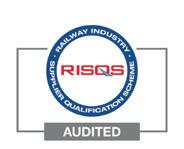


www.railworkerinsurance.co.uk and premiums start at just £250 a year for many rail trades. White collar professionals in engineering deskbased roles tend to pay more than trackside manual workers.

The premiums must be paid in full up front for a year’s cover. With the government reversing the IR35 reforms insurance may become, once again, an essential purchase for many rail professionals to support their IR35 status.
Rail employers are welcome to pass our website details onto their self-employed workforce and I would be happy to answer any questions they may have.



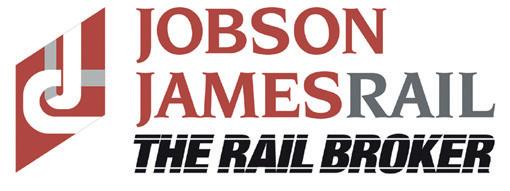

Maximising that growth potential is crucial and organisations like Solihull’s Urban Growth Company are leading the way in making sure that happens. Peter Plisner has been talking to its managing director, Jonathan Bretherton.
The walls of the Urban Growth Company’s office at Birmingham Airport are covered with maps and diagrams showing the vast development that’s already taking place on the site around what will become Solihull’s HS2 Interchange station.
Interchange will be an incredibly wellconnected station with an airport and major motorways passing through the area. Not surprisingly there are big plans for development there. Arden Cross, a 140-hectare site in Solihull, will be home to the first HS2 station north of London, along with homes, offices and retail space. It’s being billed as “one of the UK’s best-connected developments.”
The UK Central Hub, which spans 1,300 hectares, incorporates both Arden Cross and other nearby sites being developed, including the NEC, airport and nearby Birmingham
Business Park. The Urban Growth Company (UGC) was set up by Solihull Council as a wholly owned, special purpose delivery vehicle to maximise the economic opportunities associated with the future arrival of high-speed rail in the borough. It’s already hit the ground running assisting with planning and investment on a variety of different projects, many of them rail-related.
Managing director Jonathan Bretherton is no stranger to UGCs. His CV includes time in the private mining industry developing mineral sites, reclaiming major contaminated land and installing infrastructure for development, including significant urban extensions to the Glasgow conurbation. But frustration with the lack of placemaking and design excellence by those building out some of the reclaimed sites led him to work on a variety of different special purpose delivery vehicles and development corporations around the country, including in Hereford, South Teesside and Sunderland.
So, what exactly does the Solihull UGC do? Jonathan said: “It’s our job to accelerate and deliver investment and economic growth, including the design and build of major infrastructure to transform the HS2 base-case into an engine for world-class development around the planned Interchange. We also apply our experience of placemaking and cityscale redevelopment to how to get the most out of these major changes.”
Artist’s impression of the APM HS2Construction of Phase One of HS2 from London to Birmingham is now well under way and there are signs that the prospect of the new high-speed line is already bringing higher levels of growth to the West Midlands
It’s our job to accelerate and deliver investment and economic growth, including the design and build of major infrastructure
One of UGC’s biggest tasks to date has been helping to redesign the car parking arrangements at Interchange. Current consent is for a 7,500-space surface level car park. But with development land at a premium in the Midlands, UGC and other stakeholders wanted to find ways of freeing up some of that land and earlier this year plans were lodged for a multistory car park adjacent to the station.
Jonathan said: “The latest application is about so much more than a car park; it’s about what it enables. The UGC plans mean that we will help with the creation of a world-class opportunity for new homes and jobs right next to the new Interchange station.”

In fact, the car park’s new footprint effectively releases around 30 additional hectares for development. In future-proofing the station site, UGC is drawing from lessons learned from the past. One place that’s helped is Ebbsfleet International station on HS1. The Ebbsfleet Development Corporation has overseen developing the Garden Village site and has done an admirable job in speeding up the delivery of homes and implementing a core
infrastructure programme comprising utility networks and connectivity projects. But much of that work has been done retrospectively and delivered after HS1 opened.

Jonathan said: “That’s meant mistakes have sometimes taken years to fix as they were baked into the original HS1 base-case. It makes you think about what more could have been achieved if that activity had been delivered before and alongside the construction of HS1.”
It’s that sense of missed opportunity that drives everything UGC does. Its raison d’etre is to deliver the added value that would otherwise be missed by the HS2 base case. By removing the barriers to investment, it’s helping to ensure The UK Central Hub is hugely investable and delivering jobs, homes, opportunities, and better connectivity, long before the first high speed train arrives.
And it seems to be working – the government has already earmarked £50 million for the construction of the multi-story car park and the West Midlands Combined Authority has offered a further £45 million loan facility. Construction firm Vinci has been appointed to design and build with additional planning and architectural support being provided by Cundall, Associated Architects and Fira. The proposals for the car park will take account of current and emerging requirements relating to electric vehicle charging, as well as connected-autonomous vehicles in the future.
Jonathan admits that dealing with HS2 isn’t always easy.
He said: “Interfacing with HS2 Ltd is a challenge because when you’re working with the biggest infrastructure project in Europe it comes with inherent challenges. It’s a different order of magnitude than dealing with normal development partners and stakeholders.”
Jonathan admits that even relatively small changes to the HS2 programme can have far-reaching effects. “They can put us on the back foot very quickly with unintended consequences, which can take us all by surprise even though some even arise out of how we are helping each other,” he said. “HS2 Ltd and UGC have got better at anticipating these things and how to handle what comes next, so that’s improved things a lot, but it can still be a challenge. In March, UGC, HS2 Ltd, DfT, Solihull Council and the Arden Cross landowners signed a suite of agreements setting out shared objectives and ways of working. Since then, I think we’ve all seen a transformation in the level of collaboration, but the pace of work is relentless.”
And one such challenge has come with a planned people-mover system. Similar to those at Heathrow, Gatwick and Stansted Airports, it will carry passengers from the airport, NEC and nearby Birmingham International railway stations. Services will run every three minutes and the system will be capable of carrying around 2,000 passengers per hour in each direction.

development of an adjacent area of land that’s currently used for surface car parking. The base case alignment would have crossed the West Coast main line at an oblique angle and it would go directly over the station platforms. In terms of asset protection and avoiding potential conflict in the short and also the long term with Network Rail and with the station itself, it’s got to be the right thing to do to cross those two resources at right angles, rather than at an oblique angle.”
Clearly modernisations and development in the future will be made much more difficult if a viaduct carrying the APM goes over the platforms. Jonathan also maintains that it will be much more challenging to make a successful plaza in front of the station if the location of the APM isn’t right.
The UGC has been helping to maximise the impact of the new transport mode. HS2 Ltd gained Schedule 17 approval for the Automated People Mover (APM) in August 2020. Since then, the collaboration Jonathan talks about has worked well with the UGC succeeding in persuading HS2 that extra design elements would help to support wider growth plans within the UK Central Hub. These have included an option to modify the alignment of the APM as part of a potential major transformation of Birmingham International station to create a new, integrated multi-modal transport interchange. The option involved a slight change to the route of the APM, as it passes the station and connects into Birmingham Airport.
Jonathan said: “The new alignment is subtle but critical because it allows for the future
As a result of the changes there is now the potential to deliver a new public plaza that will create an exciting sense of place and arrival. Jonathan said: “We’ve worked closely with HS2 to develop this proposal and it’s been a really good example of innovation through collaborative working and making sure that this national infrastructure delivers regional benefits.”
The realignment is designed to support the UGC’s plans to integrate the APM stop with a revitalised Birmingham International station. It’s another of the big rail-related transformation schemes high on its list of priorities. Although a longer-term plan, the proposals have already been announced. International has become something of a Cinderella station when you consider that all the other main stations on the West Coast main line in the West Midlands conurbation have now been modernised, most recently
Coventry and Wolverhampton stations.
We’ve worked closely with HS2 to develop this proposal and it’s been a really good example of innovation
UGC has outlined how the current 1970s building will be redeveloped into a 15,200 square metre international gateway, able to accommodate the 16 million passengers a year predicted to use the station within the next 20 years. The designs also suggest how the station will bring existing rail together with highspeed rail, trams, buses, rapid transit, private vehicles, taxis and bicycles, with connections to Birmingham Airport, the NEC, HS2 Interchange station and Birmingham Business Park.
Significant growth
Jonathan said: “This and other schemes will support existing major businesses that have significant growth plans of their own. They also complement the recently launched Birmingham Airport Connectivity Plan from Midlands Connect, which could significantly increase the number of services using Birmingham International station.”
Despite the current lack of funding for revamping Birmingham International, elsewhere things are happening pretty fast with HS2 on site and new access roads into the station taking shape, again with help from the UGC. The area, already well connected by road, is set to become
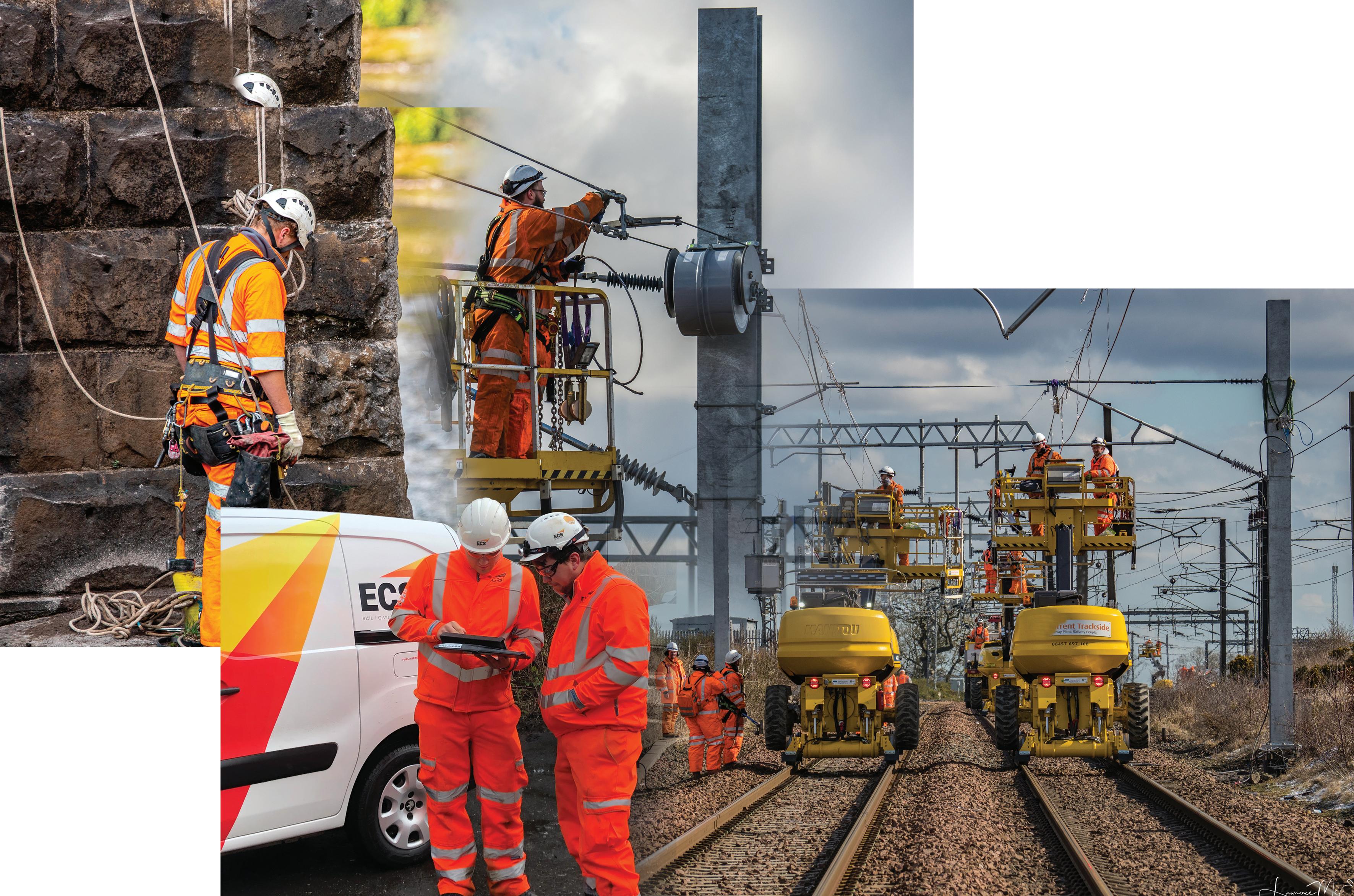

equally as well connected by rail too. For those at UGC it’s all about building an aspirational vision that stakeholders can buy in to and having a unifying goal.
Jonathan said: “We’re fortunate that our stakeholders jumped on board with Solihull Council’s vision very early, because that support has allowed us to accelerate the pace and scale of activity at The Hub.”
And although development on the outskirts of towns and cities isn’t always welcome, in helping to shape future development in Solihull, the UGC is also doing its bit to encourage modal shift. Delivering more people to major developments by rail rather than by car will help with government plans to decarbonise transport as it heads towards its much-publicised net zero target by 2050.
Image: Solihull UGCJulian Weatherall is a man ready to roll up his sleeves and get involved in a challenge, even when all eyes are on him. No more so was that apparent than during the Thames Diamond Jubilee Pageant, when he was rail lead for the celebration.
“I was on national television and I had a film producer shouting at me to put the green flag up and let the Princess Elizabeth steam train move off Chelsea Bridge,” said Network Rail’s mobile operations manager.
“The event involved more than five months planning, with my role involving sorting out all the closures of the railway bridges, searches with British Transport Police, and deploying mobile operations managers to help carry out track searches.
“All the hard work was worth it to be involved in the occasion, and despite the fact the heavens opened up about half an hour after the pageant started, it was some moment on Chelsea Bridge and seeing the Queen with the Duke of Edinburgh on the barge underneath me as the train pulled away.”
It is just one of many anecdotes Julian has collated in more than three decades in the railway, a career which has seen him be a train driver, senior field manager, emergency planning specialist, and his current role as a mobile operations manager.

train) to Paris two or three times a week,” he said. “I was bringing my old man cheeses and meats from a market near Gare du Nord station.
“I’ve never been afraid to put myself out at having a go at things and if I didn’t know what to do I’d ask. I’m still learning stuff regularly on the railway that I never knew before and that would be my message to others working in the railway – don’t be afraid to ask and challenge yourselves and the situations you find yourself in.”
He was involved in the planning of the London 2012 Olympics and worked on commissioning the Eurostar – taking the test train out of the North Pole depot back in the early 1990s.
“I was clipping the points up in on North Pole onto the West London line and taking the PS1 (the test
That message is particularly apt with Julian’s work, outside his full-time role, as the Transport Salaried Staffs’ Association (TSSA) national lead for the Safety Task Force – a partnership with all key players in the industry, pulling together multiple programmes to improve trackworker safety.
The trigger for formalising it was a tragic incident in Wales in 2019 when a train hit three people working on the South Wales main line –two were fatally injured and another colleague escaped by inches.
Mobile operations manager Julian Weatherall discusses his life in rail, the future of the Safety Task Force, and cricket umpiring for celebrities
All the hard work was worth it to be involved in the occasion, and despite the fact the heavens opened up about half an hour after the pageant started






“I do think it is as safe as it ever has been working trackside, but there is always room for improvements,” said Julian. “An important part of that is encouraging people to challenge, and the change in culture and change in understanding has taught people to challenge more and ask more questions.
“If in doubt, ask. I’ve seen all sorts of things during my career, and that includes sadly injuries and fatalities. A piece of work I’m starting to work around is using trains as protection.
“I started my career on the underground and in the underground rule book there is a procedure where you use a train as your protection. There is a lot of opportunity for more joined up thinking and sharing best practice to ensure railway workers are kept even safer, particularly when working trackside.
“The Safety Task Force brings every department and every route in the country into the same way of thinking, cutting out open line working, and ensuring those that do need to work trackside are as safe as possible.”
Network Rail figures show that 80 per cent of incidents where trackworkers were struck by a train between 1997 and late 2020 were the result of lookout system failure, which is why the Safety Task Force is leading the industry in removing unassisted lookout working and LOWS (lookout operated warning systems).
“The biggest change I’ve seen on the railway has definitely been technology, in digital and radio communications and in operational capability,” he said. “Technology is being used to ensure safer working, such as SATWS (Semi-Automatic Track Warning Systems), geofencing, which can help members of staff to avoid straying out of safe areas, as well as tracking equipment.
“We are now using airwave radio much more to coordinate into the management across our network GSM-R (Global System for Mobile Communications-Railway) handsets and in the driver systems, which has been a big change.”
The target is to completely remove lookouts and LOWS, as well as targeting 100 per cent compliance with Standard 019. Network Rail is also rolling out a new system called Network Rail RailHub, which has already been rolled out in several of the regions.

as geofencing and SATWS. In my opinion, corporate knowledge and operational understanding is so important to maintain those control measures.
“For me, I want to impart as much knowledge and understanding as possible, and to show people there are procedures and systems we can put in place when we don’t have to go through the line blockage route. It was a proud moment for me to take on the Task Force role, and I’m happy to roll my sleeves up and get stuck in.
“The most important thing now is to look at where technical authority goes within Network Rail and then what we can do beyond this. We need to make sure we do not lose the massive gains and the capability that has been put into place from the Safety Task Force.”
Away from the railway, Julian enjoys cricket and has even umpired for the likes of cricketing legends David Gower and Mike Gatting.
Julian said: “Part of my role is the interface and to find out what the issues are on the routes and how we can improve the capability and support the taskforce when there are issues – we’ve had some very good successes.
“The next stage for me is the postimplementation review with the routes and ensuring all the good work of the last few years doesn’t slip to how they were before. There might be more line blockages and the need for night working, but there are better ways of working and we’ve got to ensure we don’t allow the discipline that has got us to this place isn’t lost.
“Each of the routes have signed up to ensure we keep up the great work and also to spend money in CP7 around technology such
“I’m a Level Three cricket umpire,” he said. “I umpire for my club in London but also for the Lord Taverners.

“I’m very lucky and played and umpired cricket years ago and got back into it four or five years ago. I’ve got to know some amazing celebrities and some of them can actually play very good cricket.
“Cricket is a good switch off from the day job. Once you are out on the cricket pitch and no one is around you it is phones off and you are concentrating on the laws of cricket and the game in hand.
“I’ve done half a dozen celebrity matches this year. It’s amazing and just like my work on the railways it has opened doors to me that I never thought would because it is a totally different aspect of life.”
We are now using airwave radio much more to coordinate into the management across our network










From day one it has been the ambition of Steve Rotheram, Liverpool City Region mayor, to develop a publicly owned, integrated transport system that he and the region can be proud of.
That vision has moved one step closer with the launch of Stadler’s Class 777 electric multiple units (EMUs), with the train due to enter traffic on the Merseyrail network before the end of the year.
“When I was elected as Mayor of the Liverpool City Region I promised to build a London-style transport system to give our area what the capital has enjoyed for years: an integrated network that makes getting about faster, cheaper, greener, more accessible and more reliable,” he said. “These trains are definitely cleaner and greener, and let’s face it, they look fantastic.
“These new, publicly owned battery-operated trains will take us to parts of the network that previously we couldn’t get to. It means we can open up really good quality alternative rail travel to many people who currently use the car and to areas that have been left behind, connecting them with opportunity – and each other.”


Built by Swiss firm Stadler, the Liverpool City Region Combined Authority has 53 of the four-car units on order. Seven will also be fitted with batteries, making these so-called independently powered EMUs (IPEMU) capable of extending services beyond the current third-rail powered network.
“Batteries are a much better, much lower cost alternative and the Office of Rail and Road didn’t really want us to extend the third rail, they are inherently unsafe if someone touches them,” he said.

“These battery powered trains will help take us to some of the places on the outskirts of the city region where people have wanted
something, but we’ve been reluctant to put a third rail in.”
Steve told Rail Director the new trains will provide 50 per cent more capacity than the Class 507 and 508 EMUs they will replace. They are able to reach a speed of 80km/h when fully charged and cover a distance of 55km on one battery load.
 Liverpool City Region Mayor Steve Rotheram says they will be putting the public
Liverpool City Region Mayor Steve Rotheram says they will be putting the public
“The trains have exceeded our expectations, they look fantastic but also functionally they work for us and the needs of the passengers in our area,” he said at the launch of the train at the German rail trade show InnoTrans.
“They feature much more space for cycles –as we’re trying to integrate it with active travel – more room for push chairs, easy access for people with disabilities and more space for wheelchairs. All of those things open the network up to people who previously have never thought of using it because of those accessibility issues.
“When you get on the Tube in London and see how difficult it can be to get off the trains – often high step downs and big gaps – there is none of that here, it is absolutely level and there is no gap at all.”

The IPEMU is equipped with a battery-based energy storage system, with the new battery traction equipment mounted in the underframe and the cooling system located on the roof.
While it is running on the electrified network, the batteries can be charged from the third rail, as well as through regenerative braking. They can be recharged in less than 15 minutes, and batteries are able to undergo more than 10,000 charge/discharge cycles.
“We’ll be able to go to places in the city region which haven’t felt part of the Merseyrail network because the trains never went there. They’ve been served by other train operators, but now we can plan for the future where we would be able to use that infrastructure and get these trains to go there,” Steve added.
“The first of trains will be from Kirkby, which is at the end of the line at the moment, to a new station at Headbolt Lane but, in the longer term, the plans are that they could then connect Headbolt Lane to Skelmersdale – who need a station by the way – but that means we open up a whole conurbation who have not had the opportunity for rail travel to use these trains.”
half a billion pounds is being invested in the region’s transport network, not just on the trains, but on a new maintenance depot, power supplies and on the extension of the platforms to enable them to handle the new trains, which are eight carriages long.

“These trains will go to places that currently we can’t get to because we’d have to put thirdrail infrastructure in.
“This is going to open up huge possibilities for us in the city region. Public transport is so much more than infrastructure, it’s about connecting people with opportunity and that’s what we intend to do. We intend to connect people with jobs, education, training opportunities, cultural attractions and each other.
“Thanks to our partnership with Stadler, these new trains will be a giant leap forward in making that vision a reality. The trains have been designed in consultation with the public and are not just the most sophisticated trains, but also the most accessible fleet in the UK.
“They’re also the first trains in the UK that have been bought by the public for the public. We are putting the public back into public transport in the Liverpool City Region, integrating this with our buses and our ferries. This work is going to be transformational for so many.”
 Nearly
Nearly
“We want to improve the passenger experience and we’re doing that with improvements to accessibility in our stations and also the building of new stations,” he said.
These trains are definitely cleaner and greener, and let’s face it, they look fantastic
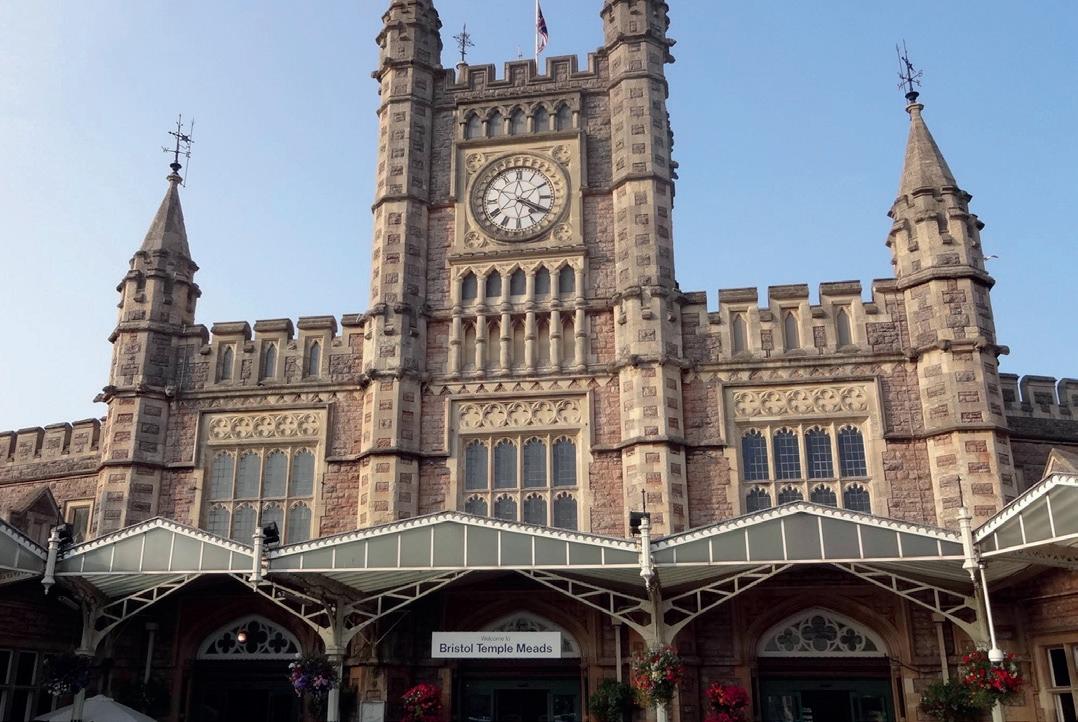
Manchester Metrolink takes delivery of final new tram Metrolink has been boosted by the arrival of the last of 27 new trams, as part of a £72 million investment in the network. Transport for Greater Manchester (TfGM) signed a contract with Bombardier Transportation UK – now Alstom –and Kiepe Electric to produce the M5000 in July 2018. The last of the new batch of trams was received by Metrolink operator KeolisAmey Metrolink (KAM) on 24 September and is undergoing testing and commissioning before going into service.
Coca-Cola bottler
switches from road to rail Coca-Cola Europacific Partners (CCEP), the largest independent bottler of Coca-Cola globally, is making the switch from road to rail to distribute its soft drinks between its manufacturing sites and thirdparty warehouse locations across London and Yorkshire. The change will see 18,000 loads of CCEP’s products – some 2.5million cans and bottles of some of the world’s most popular soft drinks – delivered by rail per day, reducing carbon emissions by nearly 50 per cent.
Onsite trial of revolutionary geofencing technology to improve trackside worker safety Trains operated by Tended, an award-winning start-up that develops advanced solutions to transform occupational safety, has started a trial of its geofencing technology with AmcoGiffen and its trackside teams. The trial comes after two years of successful geofencing technology development alongside Network Rail’s Safety Task Force. The technology has received official product acceptance from Network Rail and Tended is deploying the solution within AmcoGiffen to demonstrate its capabilities in improving site safety and efficiency.
at Bristol Temple Meads station are taking part in a multi-million-pound trial programme designed to upgrade their travelling experience.
The station is set to become the UK’s first ‘Station Innovation Zone’, a hotspot of technologies, all aimed at perfecting the process of getting from A to B. The project is being overseen via a partnership between Connected Places Catapult, the UK’s innovation accelerator for cities, transport, and place leadership, and Network Rail. The organisations have selected a variety of start-ups, all with solutions that help smooth various aspects of the passenger experience.
There will be smarter ticketing solutions, clearer accessibility with better wayfinding apps, using AI to improve people flow, and even designing better facilities using human-centred design principles.
The Catapult is directing millions of pounds of Innovate UK funding into the five-year programme, which will pioneer the approach, and plans are in place to roll out the model to other stations as it succeeds.
Applications are now open for start-ups with ideas that could be
trialled in the Station Innovation Zone. Passengers are likely to see the first trials beginning early next year. This announcement of the Station Innovation Zone follows the government’s levelling-up announcement of £95 million for the Bristol Temple Quarter regeneration programme and the Catapult funding will complement the ongoing revitalisation of the station. Around £60 million of the funding from government will enable improvements in and around Bristol Temple Meads station, including three new entrances to the station, as well as infrastructure works and new public spaces nearby.
The University of Bristol is developing its presence in Temple Quarter near the station, recently opening the Temple Quarter Research Hub, housing the Bristol Digital Futures Institute with a large scale data-centre and a sector agnostic digital twin.
Francis McGarry, Network Rail’s Wales and Western investment director, said: “We’re delighted to be partnering with Connected Places Catapult on this new programme which will provide SMEs with crucial funding opportunities and Network Rail with new, innovative ideas on how to further enhance the experience of our passengers.”
It was a very happy birthday to a famous elderly gent of the railways, as the Flying Scotsman started its 100th birthday celebrations.
The world’s most famous steam locomotive, owned by the National Railway Museum, made its first appearance in a year-long programme of events to mark its centenary with an appearance at London’s Kings Cross, which is also celebrating its 170th anniversary.
The double celebration saw the celebrity train puff its way down to
the capital, following an overhaul by Riley & Son (E) Ltd in preparation for its busy upcoming anniversary year. February 2023 will mark the 100th anniversary of its maiden voyage, when it travelled from the sheds at Doncaster Works. Simply numbered 1472, it was the first locomotive of the newly formed LNER (London and North Eastern Railway). It gained its name in 1924, when it was selected to appear at the British Empire Exhibition in London and was named after the daily 10am London to Edinburgh rail service.
As the years passed, love for the iconic engine grew, and in 2004 a campaign spearheaded by the National Railway Museum to save the locomotive for the nation amassed the support of thousands, confirming its status as a national treasure. The appeal to keep the steam icon in Britain was supported by a £1.8 million grant from the National Heritage Memorial Fund and the generosity of the public. Its restoration was also completed with the help of a Heritage Lottery Fund grant of £275,000.
Image: Network RailCyber attacks can be financially and operationally devastating for rail organisations, notwithstanding the reputational damage they can bring. It is vital rail companies have the correct mitigations and protection in place should the company be targeted.
Encompass Engineering is providing a secure and simple-to-understand platform to help customers understand IEC 62443 and 27000 – international standards that address cyber security for operational technology in automation and control systems.
“If you think about modern trains now there’s a lot of functionality built into them. It’s not just the working systems, but also the public facing systems like the Wi-Fi on trains, ordering food from your seat, and knowing what platform your train’s going to come in on,” said Andrew Cook, senior project engineer at Encompass Engineering, who specialises in cyber security.
“Taking that one step further, from a maintenance point of view, you’ve got remote reporting which enables you to do preventative or predictive maintenance. All of this functionality means the train is talking to trackside equipment, which unmitigated is a potential cyber attack vector.
“We’ve also stepped away from bespoke systems on trains run by dedicated train wires to now running with networks and devices that are commonplace in an office. A lot of the office systems are well understood by potential cyber attackers. And with these common operating systems now running on some of the devices on the train, trains are becoming increasingly open to attacks.”
The importance of protecting against cyber attacks was highlighted earlier this year when Italy’s national railway company Ferrovie dello Stato Italiane (FS) was targeted leading to a temporary suspension of some trains.
“Cyber security is now a high priority for most companies and so it should be.
“Especially if you are buying new trains with all these functionalities. Cyber security must be prioritised when you are designing and reviewing rolling stock,” said Andrew, who recently joined Encompass Engineering from Transport for London.

“To put an organisation in the best position we have developed a simplified process for steering our customers through compliance with IEC 62443. We evaluate the design, review the modifications and then work with the supply chain to test and validate the mitigations. This means that we and our customers know that the threats and risks have sufficient mitigations identified to significantly reduce the likelihood of cyber attacks, thereby hopefully preventing any subsequent disruptions, additional costs or reputational damage to the company.”
The company is proving a big hit with its expertise and knowledge of the standards, processes and of the cyber industry, already working with the likes of CAF, Alstom, West Midlands Trains and Rock Rail to provide tailored approaches for their customers’ needs.
“We are working with some big companies
where we become part of their team. We have our customers’ best interests at heart to push forward and get the best possible outcomes for them in a cost-effective way,” said Andrew.
“You want to make it as difficult as possible for a cyber attack to happen in the first place. But if an attacker does get through, it is about putting measures in place to ensure the potential attack can be detected and resolved immediately.
“It is vital that rail organisations remain ahead of the game to tackle cyber attacks and working with Encompass Engineering, our current and future customers can be assured of this – we have the expertise to provide the best platform.”
Encompass Engineering was established in 2007 to provide clients with quality and technical assurance services, with expertise in new rolling stock, modification programmes and requirements management. The company delivers several other services, including senior management advisory, overall strategic review from a customer’s viewpoint, project engineering, project management and general engineering consultancy.
Visit https://encompass-engineering.com for more details
With the increasing use of digital technology within the rail industry to reduce costs and deliver a better passenger experience, Encompass Engineering’s Andrew Cook explains how keeping rolling stock and its infrastructure safe from cybercrime has never been so important
Times are tough. So, identifying how to make your business leaner has assumed even greater importance. But ‘this should not result in the wellbeing of your people being left on the cutting room floor’.
Indeed, transforming your ‘people approach’ should be a high priority if you want to retain and recruit the best. The good news is this can be accomplished on a shoestring budget. Revisiting your people policies with fresh eyes can improve your bottom line and bring your people closer to the heartbeat of your business.
Here’s how:
Recruiting can be a bottomless money pit. Yet it’s commonplace to rinse and repeat the recruitment recipe that’s been in place for years. Put yours through a root and branch audit, analysing the effectiveness of each steppingstone, the cost at each stage and the current state of play with regards to outstanding vacancies. Align this with the data you have on issues such as probation success rate, length of service, promotion, and internal move opportunities. Would an internal referral scheme bring a better quality of candidate? I’ve worked with organisations where we’ve saved significant sums from this simple but nonetheless detailed exercise.
This works if you want to make changes that secure employee buy in. A survey is also Kaizen in action because it encourages everyone to suggest changes. In many cases your arm’s length brand ambassadors will know more about certain areas of your business than you. Asking how and where they would make improvements will build a rich ideas bank. One client’s sales team was struggling with low morale and underperformance. We asked for their ideas in a survey. One whimsical idea proved popular –
once a month the winning salesperson painted their hand, put it on the office wall and signed it. Over the next 12 months a colourful timeline of achievements and competition was evident for all to see. Running parallel to this from the survey feedback we revisited the commission structure and improved the training by involving the top performers in a mentoring programme.
This has gained traction and is one of the most common subjects where my guidance and experience is sought. It has many benefits from reducing costs to driving down burnout, sickness, and presenteeism. But again, the devil is in the detail, in this case the consultation and planning before it’s introduced.
4.
Ask most employees how they feel valued by their employer, and you can bet that training and development is up there. But it is being increasingly sidelined. Costs, organising,
managing while key people are away, are all legitimate barriers. Yet upskilling and cross skilling teams has a measurable commercial advantage. So, opt for the road less travelled by creating ‘Knowledge Champions’ and ‘Change Experts’ and create employee focus groups.
These initiatives will move you closer to a workforce rich in expertise with ownership of their roles and a stake in their own development. You’re likely to find a reduction in external recruitment costs too given you’re upskilling people for internal promotions while also building a strong, authentic culture with abundant outputs of individual and team success stories.

Please ensure that your performance management structure complements these initiatives. Your one-to-ones, annual reviews and team meetings need bandwidth for growth plans and career aspirations to be discussed, planned, and implemented. You may have to review your policies to ensure they align.
Amy is an Associate CIPD professional with many years’ experience and expertise gained in fast paced business environments with a strong focus on growth. She works with organisations to accelerate efficiencies within all areas of the business. Her qualifications and training include CIPD Level 7 in HR Management, UK Employment Law Diploma, IOSH Working Safely certified, Finance for Non-Finance Managers, GDPR for Business. Amy has developed a series of one to two-day HR MOTs which give you the opportunity to focus on key HR issues in your organisation.
You can contact Amy at email Amy@exhilHRate.co.uk. Connect with her on LinkedIn www.linkedin.com/in/amy-blick-exhilhrate and visit her website www.exhilHRate.co.uk
Amy Blick is an experienced HR specialist, the founder of ExhilHRate. She is internationally renowned for her work with global brands and SMEs. In her first of three columns for Rail Director Amy looks at how you bring your people closer to the heartbeat of your business





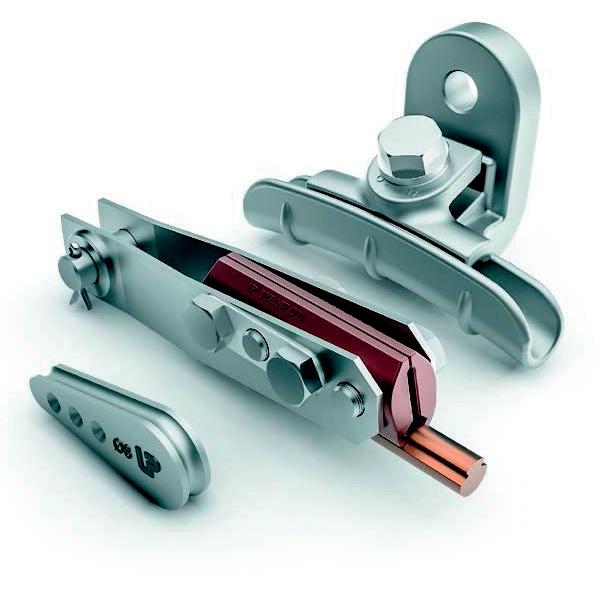




RossHenderson broke down and couldn’t have been happier when he was told he was successful with his application for customer service modern apprenticeship at ScotRail.
The achievement is even more inspirational taking into account Ross is the train operator’s first deaf modern apprentice.
“I’d never done well at school, I preferred to do practical,” he said. “I faced disability barriers because I am deaf and I never thought ScotRail would take me on because of my hearing. Two weeks after applying for the apprenticeship I received the call saying I had got the job. I just broke down, I couldn’t have been happier.”
That was 15 months ago. Since then, Ross has gone from strength to strength working at Aberdeen station, selling tickets and ensuring people reach their destinations safely.
“I might start work bright and early at 6am, but I can never wait to come down and interact with the customers and be with my colleagues,” he said. “I like customers and I like helping other people.
“It is amazing how many challenges you go through on a day-to-day basis in a railway station, all different ones as well. No day is the same working in a railway station.”
Having suffered from bullying as a child, Ross’s modern apprenticeship has boosted his confidence, to the extent he is now comfortable going for walks around his village – something he would not have done before.
“My confidence has really grown since getting the modern apprenticeship because I’m dealing with challenges I’ve never dealt with before,” said Ross, who wants to continue as a permanent gateline assistant at ScotRail. “I was bullied as a child and I was quite down, but ever since I got this job at ScotRail my confidence has come right up. I’m the first deaf apprentice with ScotRail and the support I’ve had has been amazing”

As part of ScotRail’s ambitious early careers strategy, the train operator has set itself the target of increasing the number of apprentices tenfold by 2025. To help achieve this ScotRail took on 16 young people in modern apprenticeship roles during 2021 – the highest intake of apprentices in the past five years.
Ross shared his story as part of International Week of Deaf People, in which ScotRail partnered with Skills Development Scotland (SDS), in the hope it will encourage more people from all backgrounds to consider
apprenticeships as a viable career path, as well as a career in the railway. I first heard about modern apprenticeships when I was looking for apprenticeships and I thought I would really like it,” Ross said. “I like customers and I like relating with the public. I don’t like sitting in an office, I like being outdoors and talking to people, and helping them.”
Inclusive workforce SDS, in partnership with equality organisations, works with employers to help them attract, support, and retain individuals to create more inclusive and diverse workforces. Recent SDS figures in Scotland revealed there are more than 4,836 modern apprentices in training who have self-identified as having a disability, with 3,334 starting an apprenticeship in the last year.
Ross Henderson has seen his confidence grow and thrives on social interaction since starting a customer service modern apprenticeship with the train operator
My confidence has really grown since getting the modern apprenticeship because I’m dealing with challenges I’ve never dealt with before
Ross said: “If you feel your anxiety is really bad, or if you are deaf or if you have a disability, don’t let that bring you down.
“If you don’t give it a go you’ll never know. Just because I am deaf doesn’t make me different to anybody else. This modern apprenticeship proves that I can do the job. If you give it a go you will always thrive in ScotRail.”
Hundreds of apprenticeship jobs are available across Scotland by employers such as ScotRail.
The train operator also plans to offer a clear career pathway with opportunities for existing staff to take advantage of new and innovative early careers programmes. This includes more engagement with Scottish schools in each of the mainland local authority areas and enhanced placement partnerships, graduate schemes and intern programmes.
Joanne Maguire, ScotRail chief operating officer, said: “Scotland’s Railway is for everyone, and that extends to both our customers and our workforce.

“We’re passionate about providing opportunities for people of all backgrounds.

We want to show that there’s a place for everyone in the rail industry, and that everyone has something to offer.

“Having had the pleasure of meeting Ross twice myself, it has been fantastic to
see how much he has grown and developed since starting his modern apprenticeship with ScotRail, and I hope his story inspires more people to consider the railway, and apprenticeships, as a viable career path.”
I
t may be several decades since Mark Thurston first started his career in the railways as a technician apprentice on the London Underground, but the importance of providing that platform to the next generation of workers isn’t lost on the chief executive officer (CEO) of HS2.

Europe’s biggest infrastructure project has more than 950 apprentices involved in the project, putting it firmly on track to meet its target of creating 2,000 apprenticeships. And with construction gathering pace, the breadth of apprenticeship programmes provided has expanded with cyber security, land referencing and health, safety and the environment, joining project management, engineering and quantity surveying.
“Our continued investment in future talent is helping to address the UK’s skills gap and ensuring we have a highly skilled workforce in place to deliver HS2 and major infrastructure projects of the future,” said Mark, who joined HS2 Ltd in March 2017.
“We want to grow our economy and we want to invest in skills and that is something we continue doing. We’ve now got more than 950 apprenticeships on HS2 alone, and for someone who started their own career as an apprentice it is really pleasing for me to see us bring such a diverse group of young people into our industry.”
In the latest cohort, 20 new starters aged 16-28 joined HS2 Ltd at office and site locations between Birmingham and London and will now combine work and study over a two-year period. This year’s new starters have included college leavers, university graduates and individuals who were already in employment, but in roles that offered limited career progression.
“We continue to attract the calibre of people into the industry,” said Mark, who has more than 30 years’ experience including leadership roles in engineering, project and programme management and business operations. “There is an acceptance across the whole
that we need to be much more diverse and the opportunities with HS2 are helping with that.
“With a total workforce of 34,000 we’ve got a great opportunity to really drive a workforce that is not just going to be part of delivering this project, but which will leave a skills legacy and a workforce for the sector for generations to come.
The new high-speed line, the biggest rail investment ever made in the North of England and Europe’s largest infrastructure project, will run between the North West and South East, stopping at Manchester, Birmingham and London with trains continuing on the existing network to Scotland and elsewhere.
“We are about 12 years into a 30-year project and to get to Manchester is going to take us to almost 2040, so the investment in skills, capability and technology is going to be crucial,” said Mark.
“We’ve done a lot of work in Birmingham with what was the National High-Speed Rail College (now National College for Advanced Transport and Infrastructure), and a whole education programme working with schools and trying to attract young people in schools right along the line of the route to take up STEM (science, technology, engineering and math) subjects.
industry
Europe’s biggest infrastructure project has got more than 950 apprentices working on it. CEO Mark Thurston explains why it is so important the project offers opportunities
We want to grow our economy and we want to invest in skills and that is something we continue doing








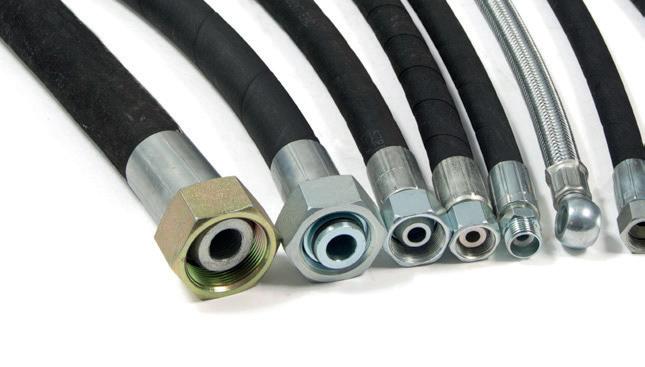


“Also pleasing to date is that we’ve had about 2,000 people join our workforce who are out of work. This will continue to be an agenda for us and HS2 as we continue to build our workforce.”

170 miles of new high-speed line is already under construction between Crewe and London, with in total more than 250 miles of new high-speed line planned across the country.
Major civil engineering works are under way with £23 billion contracted into the supply chain and more than 350 active sites between the West Midlands and London, supporting 27,000 jobs.
“This will be a railway of the highest standards that we have built in the UK in living memory and will connect communities particularly in the Midlands and the North, which is crucial to levelling up our economy,” he said, speaking at the recent Rail Forum Conference.
“The project will drive carbon, not just out in the built environment, but also how HS2 plays its part in driving carbon out of our transport system. But it is a huge undertaking and we’ve not built a railway north of London since Victorian times.”
Mark says about 27,000 people are working across the project on about one-third of the way through phase one of the project. This includes being on site at three of the four new stations. The number is expected to peak at around 35,000 in the next few years.
He said: “We will start to mobilise the design delivery partner for phase 2a hopefully early in the new year. Over the next 18 months we’ll let all the rail systems contracts for phase 1 and start testing for phase 1 around 2027/28 (with the opening window of 2029/33).
“This will be a captive service with the opening of the railway between Old Oak Common and Curzon Street, and when Euston is finished and phase 2a we will be running trains from Euston all the way through the West Midlands and up to Crewe. The intent is to open up into Manchester by the end of the 2030s.
19-year-old Carley Chiles from Birmingham applied to join HS2 as she wanted to continue her family’s tradition working in the rail sector. Carley is studying a two-year Level 3 apprenticeship in health, safety and the environment.

“97 per cent of the £23 billion that we’ve contracted to date has gone to UK-based companies and more than 60 per cent of that value is now in the SME community. We are raising the bar on many fronts, leaving a legacy and driving better standards, safety, design and creating opportunities to upskill and use innovation, with collaboration at the heart of how we are working with our supply chain.”
“My parents, brother and my uncle all work in the rail sector, and my grandma started in the steam train days, so I really wanted to carry on the family tradition. The opportunity to join the team building Britain’s new railway, and taking train travel into a new era, was a huge appeal for me. I can’t wait to get started.”
Karl Talbot, 28, from Birmingham had worked in hospitality for 11 years before joining HS2, but felt it was time for change. Karl is now studying for a Level 4 apprenticeship in cyber security.
“I dreamed of the opportunity to build a career in an industry that I’m passionate about. The cyber security apprenticeship really stood out, as technology is constantly evolving, with unlimited learning opportunities and challenges. I chose HS2 as I knew this would be a massive opportunity to work for such a vital part of England’s future infrastructure; it’s going to be one of the country’s pinnacle achievements.”
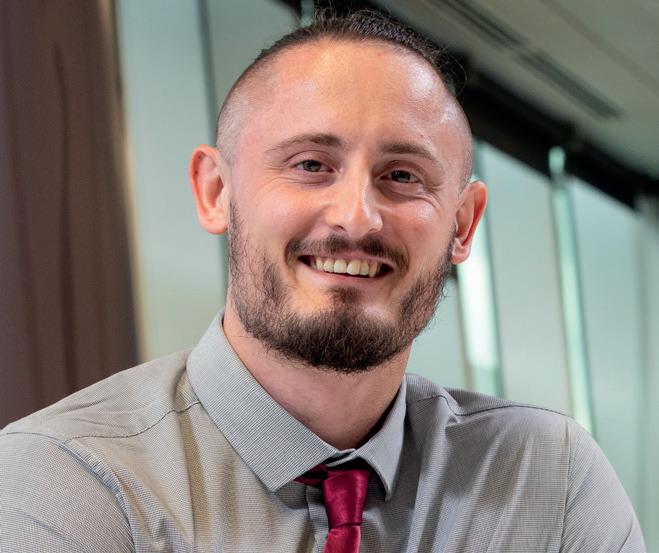
This will be a railway of the highest standards that we have built in the UK in living memory
Millcroft’s expertise and experience in the rail industry have put it at the heart of many of the major projects transforming rail travel.
A scaffolding specialist with experience of working for Transport for London (TfL), Network Rail, Crossrail and the major construction and civil engineering providers for the rail industry, Millcroft has a wealth of rail knowledge and safety bestpractice. The company’s design and engineering expertise, along with its highly skilled and trained site teams, has resulted in recent rail projects including the terminus for the new Elizabeth line at Paddington, the new HS2 terminus at Euston, HS2 works in London and the Colne Valley Viaduct, and upgrade works to TfL properties at Whitechapel.
At Paddington, Millcroft was responsible for the design, safety management, delivery and adaptations of the complex scaffolding needs for the new terminus.
The project sought to maintain safe access and egress in very tight and challenging locations. The team generated more than 300 designs for a vast selection of bespoke scaffolding structures including the complex main canopy bridge deck.
At Euston, Millcroft is providing temporary works infrastructure, protection screens and all required access and containment solutions to support the enabling works for the construction of the new HS2 Euston Station.
These solutions include the installation of an eight-metre-high modular acoustic screen, manufactured to Millcroft’s own design and specification, to shield passengers and staff from the work area and associated dust and noise. It also provides protection against crowd surges and is sufficiently resilient to withstand any explosions track or passenger side.
Millcroft is also erecting large birdcage structures over the live site offices and protection decks over the back-room areas to ensure day-to-day ‘business as usual’ running of the station can take place during the removal of the roof structure.
The project requires a carefully planned scheme of works to ensure the installation can be carried out safely, 24-hour hours a day and within organised block possessions. Millcroft is adhering to stringent protocols to ensure safe and effective enabling works can be carried out above live platforms.
For HS2 works in central London, the company is providing design, installation, adaptations and project management of access and safety scaffolding requirements across eight different terminals on the HS2 route. During the fiveyear contract, Millcroft’s in-house design

department is working collaboratively with the client to understand the mission-critical programme and safety requirements at each site, and delivering solutions aligned to the needs of construction and engineering teams.
A two-year contract at Whitechapel involves enabling works for the maintenance and upgrade of retail and residential properties owned by TfL, located adjacent to the District and Hammersmith & City lines. Work is restricted to weekend possessions, so precise project management has been essential.
Rail infrastructure projects demand a scaffolding company that is experienced at working in controlled environments, pays meticulous attention to health and safety protocols, has exceptional technical expertise and demonstrates a ‘can-do’ collaborative attitude to what can be an evolving brief. That’s why Millcroft is perfectly placed to support the construction and civil engineering industries on some of the most important rail infrastructure projects in the country.
Billy Jones from scaffolding specialist, Millcroft, discusses the company’s recent projects in the rail infrastructure sector‘At Paddington, Millcroft was responsible for the design, safety management, delivery and adaptations of the complex scaffolding’
is providingtemporary
worksinfrastructure, protection screens and
all required access and containment solutions
B ridges are clearly marked with their clearance height, but drivers who are lost, or don’t know the height of their vehicles, regularly come a cropper, much to their embarrassment, inconveniencing rail passengers in the process.
The standard procedure is to close the road, drag the offending vehicle out from under the bridge, perhaps having deflated its tyres to provide a bit of clearance, then inspect the bridge and the railway over it and reopen the line.
Sometimes work is needed first – the impact can lift the bridge and damage the track or push it sideways with the same effect.
With 1,600 bridges struck each year, costing Network Rail more than £5.5 million in delay and cancellation fees, it’s a major problem. Coddenham Road bridge at Needham Market in Suffolk was hit 19 times in 2020/21.
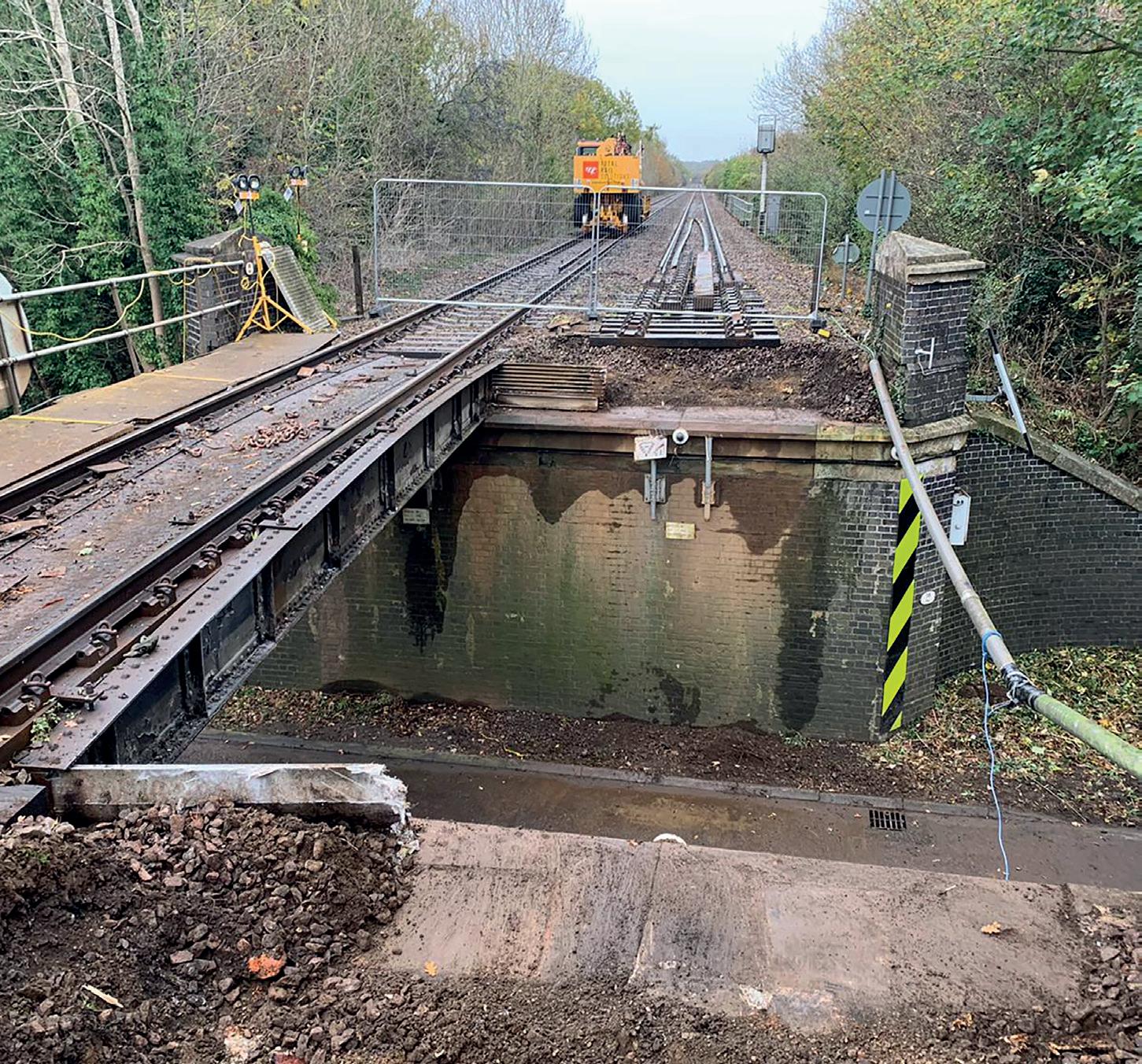
Launching a ‘Wise Up, Size Up’ campaign in 2021, aimed at persuading drivers to be aware of the height of their vehicles, Network Rail chairman Sir Peter Hendy said: “Bridge strikes cause unnecessary delays, costs and safety issues for road and rail users. To compound matters, they drain public funds which should be used on upgrading and improving our network.
“In recent years, we’ve done a lot of work with partners across the industry to tackle the problem and, whilst it’s encouraging to see numbers on the decline, there’s a lot more work to be done.”
While bridge strikes are inconvenient, and cost both Network Rail and the taxpayer a considerable amount of money, the damage is usually swiftly repaired, and delays only last a matter of hours.
Not this time, however. At around 07:45 on Saturday 5 November, a lorry carrying waste containers on behalf of Rutland County Council struck Fosters Bridge, which crosses the A6121 Stamford Road at Ketton and carries the railway between Leicester and Peterborough. One span of the twin-track bridge was so badly damaged it had to be removed for repair.
Both the railway and Stamford Road were closed, and buses replaced trains between Leicester and Peterborough.
Leicestershire Police attended along with emergency services and the lorry driver was taken to hospital.
Gary Walsh, route director for Network Rail said: “I am really sorry that passengers and the community are likely to be affected by this accident for some time. The impact has caused significant damage and our engineers have to replace two structural beams as well as then reinstating the track, signals and other railway equipment on top of the bridge. We’re doing everything we can to get trains moving again safely and thank everyone for their patience while we carry out this work.”
Repairs could take three weeks. Meantime, CrossCountry train services will run between Birmingham New Street and Leicester and between Peterborough and Cambridge/ Stansted Airport, with a bus replacement service from Leicester to Peterborough. Freight services will be diverted via London.
Bridge strikes are, sadly, all too common. Photographs of buses and high-sided lorries that have been driven under low bridges are often seen on social media and in the press
In recent years, we’ve done a lot of work with partners across the industry to tackle the problem


is frustratingly common for good practice asset management to be viewed as a cost that can be deferred.” That’s according to TXM Consult’s head of asset management advisory, Tim Kay, who believes businesses face further uncertainty and should prepare for more economic turmoil.
Tim has worked in asset management for almost two decades, across multiple sectors around the world. Now he leads TXM Consult’s Asset Management Advisory service, supporting clients in large infrastructure organisations, delivering sustained value.
Tim said: “Many organisations choose to wait until operations are up and running before considering their asset management or view the implementation of asset management as an isolated project that has little bearing on the wider business – both are costly mistakes.”
Getting out of the hole is harder than avoiding it in the first place
“The irony is that good practice asset management creates much needed headspace. We often speak with clients who have built a team that is good at fixing things rather than working out how to stop them breaking in the first place. Taking a step back to understand the right questions to ask, the right data to collect, and the right processes to change frees up time and space needed to innovate and improve.” Tim added.
“The most successful organisations are those which have embedded key principles of asset management from the very start. They respond to change in a considered manner rather than having to react.
“This approach is more important than ever as businesses face challenges from all sides. The transit industry is still reeling from the COVID-19 pandemic and with energy and materials costs rising, financial models are in disarray.
“With recession looming, it’s easy to defer investment in asset replacement, new technologies and business improvement. While this saves money in the short term, it tends to store additional future costs as the asset base exceeds its economic life, and inefficient ways of working become more ingrained.
“Uncertainty provides the necessary impetus for change. Many businesses have been too busy for years to stop and address their crumbling asset base that is operating beyond economic life and well beyond capacity.
“Organisations that already practice good asset management were at an advantage. With contingencies in place, they understood their supply chain risks, and they knew what to switch off and what to keep running.”
Tim said: “There are lessons we can learn from the pandemic that will help us navigate through the recession. Working in partnership with suppliers is more important than ever and understanding the level of business risk is critical for decision-making. Also, common understanding of the main objectives helps align the whole organisation’s approach – a single source of the truth cuts wasted effort and investment.
“I’m yet to see an asset management implementation programme fail to deliver a return on investment.
While the most effective ones have support from the whole leadership team and an appetite to improve, even small changes can make a big difference.
Asset management is like investing in a pension – the best time was 20 years ago, the second-best time is now.”
Tim is part of a team of senior business leaders, engineers, project managers and executive coaches with extensive UK and international experience driving business transformation across the transit and energy sectors.

Established in 2020, TXM Consult consists of more than 130 specialists who have worked with the likes of Transport for Wales, Keolis, Siemens, Hitachi Rail and CAF on some of the biggest rail projects in the world.
It is part of the TXM Group, a global organisation providing consultancy and resourcing solutions worldwide, specialising in engineering, healthcare, and technology.
“The disruption caused by the pandemic highlighted opportunity for change, but loss of demand came suddenly with working restrictions, the disappearance of the supply chain and materials, and the necessary funding to make the most of the opportunity.
Founded in 2005 and headquartered in the UK it has become a £220 million turnover business with a global workforce of more than 300 employees across Europe, Middle East, Africa, Australasia and North America.
Visit www.txmconsult.com or www.txmgroup.com for more details.
“It
Tim Kay, from TXM Consult, considers the role of asset management as businesses navigate an unpredictable world
Many organisations choose to wait until operations are up and running before considering their asset management
Automate manual tasks
Improve visibility of lost property and comply with GDPR
Deliver a modern, mobile experience for travellers


Free up valuable staff time
Reassure your passengers, save time & money and return more items of lost property with our lost and found software.
MWehave been providing a valued lost property service for travellers in London since 1933 and we are excited to upgrade our lost property system so that our staff can deliver a better experience to those customers who unfortunately lose their belongings on our network. We look forward to working with NotLost in delivering a system that modernises our approach to lost property, ensuring more customers get back their valued possessions.
TfL Performance Manager
For a free demonstration contact: russ@notlost.com
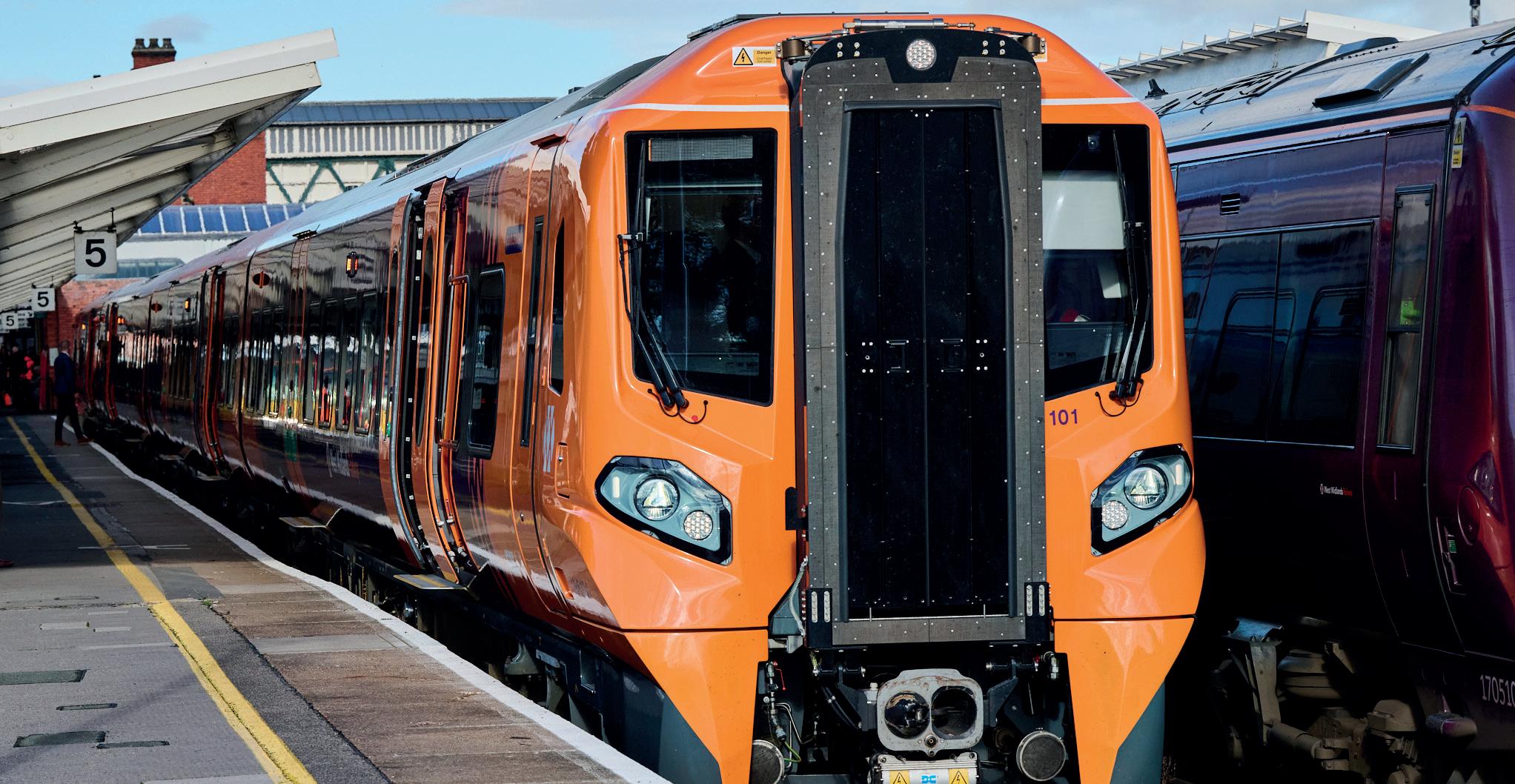
Rail passengers in the West Midlands have been climbing on board a new train fleet – the first to be introduced in the region in more than a decade.
The first of the 26 Class 196s, part of the West Midlands Railway’s £690 million investment in new trains and infrastructure, have entered services on the Shrewsbury line, serving destinations including Birmingham, Wolverhampton and Telford.
Andy Street, Mayor of the West Midlands, said: “I want to see a golden era for rail travel in our region and this £690 million investment from West Midlands Railway is a vital and very welcome element in realising that overall vision.
“These fantastic new trains will make a real difference for passengers – improving the travel experience, connecting communities and providing extra capacity – which is much needed as public transport usage continues to climb post-pandemic. This celebrates a genuine success story and is a great example of what public-private partnership working at its best can achieve for local residents.”
The first train – 196101 – was officially named ‘Charles Darwin’ by the High Sheriff of Shropshire Selina Graham at a special ceremony last month. It honours the Shrewsbury-born naturalist recognised as one of the greatest Britons of all time.
The new fleet features include intelligent air conditioning, plug and USB chargers at every seat and extra storage space. The trains offer 25 per cent more capacity than the fleet they replace.
Ian McConnell, West Midlands Railway managing director, said: “These trains will provide a much-improved travelling experience for our customers with smart air conditioning and power points at every seat.

“We have had to wait a little while to introduce these trains due to the pandemic, but I am delighted our customers will now be able to experience the trains for themselves.”
Initially a small number of journeys are being run by Class 196s as the new trains are drip-fed into service over the coming months. The trains are due to enter service on the Hereford line next year, connecting Birmingham with destinations including Bromsgrove, Droitwich and Worcester.
Andy Street, Mayor of the West Midlands, describes the Class 196s as a vital element of the golden era for rail travel in the region




No matter the challenge, we provide solutions for all your monitoring needs.

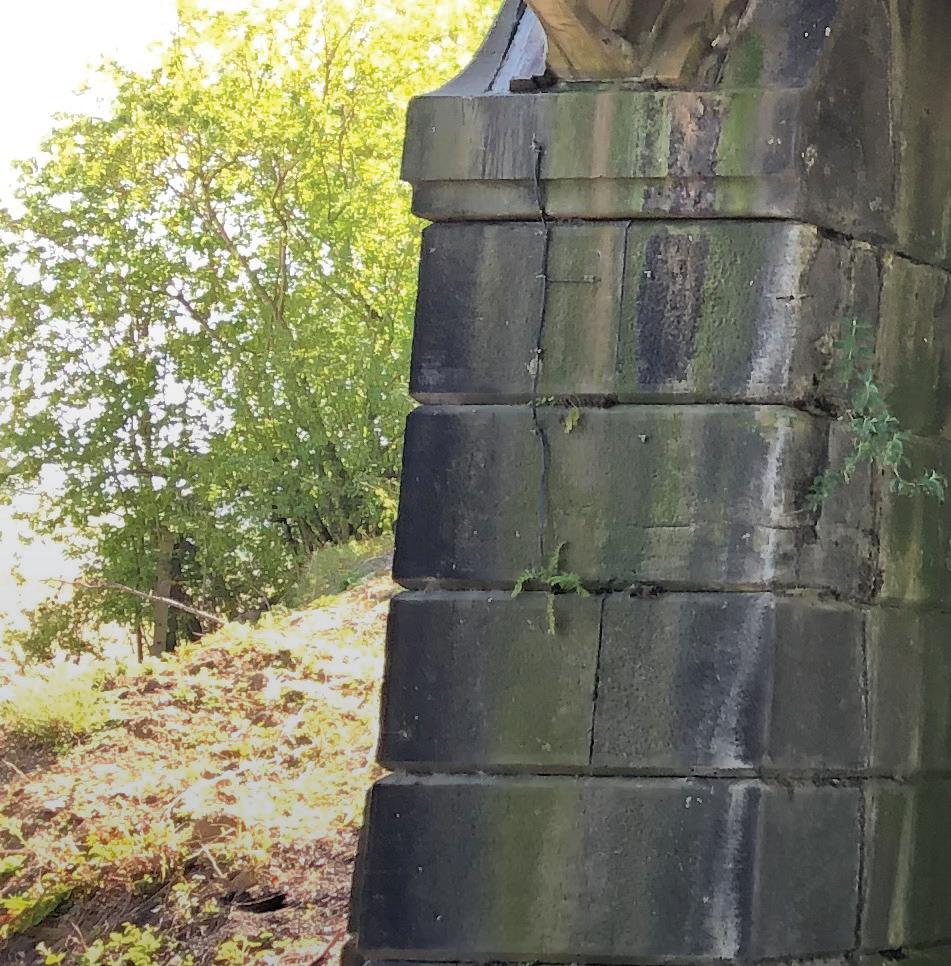
For more information please contact sales.uk@dywidag.com

With a 50-plus year heritage and a market-leading status, the Morson Group is a diverse collection of businesses with an outstanding reputation for delivering talent, consultancy, technology, screening, and training solutions around the world.
We’re a leading rail recruiter in the UK but at Morson, recruitment is more than filling roles. For us, it’s transforming businesses, fuelling industry and innovation, creating fulfilling careers, encouraging the next generation, and opening the world of work for all.

We pride ourselves on being a recruitment business with a vision and capabilities that go far beyond conventional recruitment. We recognise our role in joining the dots between career aspirations and talent requirements, delivering a legacy that will be meaningful now and in the future. Our goal is to nurture a sustainable skills and talent landscape by leveraging transferable skills, re-skilling and training and education, creating universal opportunities and enabling routes into industries such as rail.
As a family-founded business that’s still family-run to this day, Morson’s values and culture underpin all our relationships with our clients. From implementation to comprehensive solutions, we work collaboratively with our customers, adapting our services to ensure we continue to meet the everchanging needs of our clients. We’re delivering sustainable talent pools for businesses and longterm careers for candidates, through engagement, training, and strategic, value-driven services. As part of this vision, we are collaborating with businesses to understand their current and future skills requirements and aligning those insights with a diverse strategy for creating career opportunities, developing skills, and delivering social value. We’re collaborating with education providers – from primary to postgraduate – veterans’ communities (led by our dedicated ex-forces recruitment division, Morson Forces), ex-offender initiatives and organisations such as the Northern Power Women to reach disadvantaged and underrepresented groups – creating a legacy for the UK economy through collaboration.
Morson is leading and overseeing one of the most progressive diversity campaigns the rail industry has ever witnessed. We have established a diverse team of rail experts –currently 60 per cent of which are women in operational or leadership roles.
in engineering or mechanics are encouraged to consider rail for their future careers. Morson clients are some of the country’s biggest rail companies working on globally renowned infrastructure programmes and we work with them to ensure their ED&I schemes and employer brands are tailored to engage not only women in the industry, but people of varying ethnicities and disabilities, too.
We intend for this to act as a blueprint for other rail industry leaders to follow suit. We have proactively instigated a series of initiatives to ensure female contractors with backgrounds
For the rail industry to compete with others and attract the best talent, ED&I must be at the heart of decision-making processes at every level of the supply chain. By striving to achieve this, we believe the entire rail industry will be more balanced, equal and accepting in its thinking, paving the way for future generations of women to join the sector, and ensuring the design, delivery and legacy of rail programmes are just as catered for women as they are for men. In turn, Morson is helping to create a stronger, more sustainable industry, culture and country, where women working in rail becomes the norm.
RBD Community member Morson Group explains how it is collaborating with businesses to understand their current and future skills requirements
We’re delivering sustainable talent pools for businesses and long-term careers for candidates, through engagement, training, and strategic, valuedriven service
With over 40 years of experience in the rail industry, we think holistically about the entire talent lifecycle. We established our Morson Training division in 2012 to deliver professional rail training programmes for individuals working in the UK’s rail industry, including training and assessments for apprentices, rail operatives and managers. From PTS, SPICOP, machine operation and controllers to a full suite of Transport for London (TfL) courses, we offer a comprehensive rail training solution. Our rail training centres in Salford and Canning Town, London offer both classroom-based and practical training with each centre equipped with a replica rail track to put theory into practice.
Last week we solidified our commitment to STEM skills, social mobility and supporting the next generation by launching the Morson STEM Foundation. This is the cornerstone of our commitment to delivering sustainable talent pools for businesses and long-term careers for candidates, through funding, engagement and training. Through the Morson STEM Foundation, our goal is to nurture a sustainable skills pipeline, leveraging transferable skills, re-skilling, training and education to pave the way to a diverse range of career opportunities for future generations. We’re proud to be delivering a blueprint that can be followed by other business/academic partnerships to deliver innovation and social value and support the development of a prosperous and self-sufficient industrial and commercial landscape for the UK.
The Morson STEM Foundation is our longstanding commitment to creating opportunities for young people who might otherwise be held back by social deprivation. The foundation is based on four key initiatives: The Morson Maker Space, The Gerry Mason Scholarships, IntoUniversity partnership and the Pathfinders Academy.
Morson Group, together with the University of Salford, is co-funding IntoUniversity’s new learning centre at the Beacon Centre in central Salford, which will work in the heart of the local community to support young people aged seven to 18. The new IntoUniversity centre, which opens this autumn, will support young people from disadvantaged neighbourhoods in achieving their goals for higher education, employment, and work-based training, while also working closely with schools and local families to sow the seeds of aspiration at a young age.
The Morson Maker Space at the University of Salford

Opening to students for the first time in 2022, the new state-of-the-art Morson Maker Space facility forms part of the University’s new £65 million Science, Engineering and Environment Building. The STEM centre facilities have been designed to provide students with opportunities to explore new ideas and innovate, gaining hands-on experience with the types of equipment they can expect to use when they move from education into the workplace. The facilities include a wide range of industrial machines and equipment for use by students from across the University of Salford, which will enable businesses to engage with the university and students in new ways, thereby creating opportunities for employment, training and exciting new projects.
The Gerry Mason Scholarships were one of the first initiatives from Morson and the Mason family aimed at financially supporting young people from underprivileged backgrounds.
The Gerry Mason Engineering Scholarship was established in 2015, in memory of Gerry Mason – a design engineer and the founder of Morson Group. The Morson Group Scholarship was launched in 2019 to support students completing an engineering or technology degree, respectively. The 50th local scholar was able to gain access to higher education at the University of Salford this year thanks to these scholarships.
Our Pathfinders Academy is focused on levelling up the skills landscape through training and re-skilling in digital and engineering disciplines. Our digital and engineering boot camps are available to individuals from all educational, experience, industry and social
backgrounds; from students and veterans to people looking to change career paths or return to the workplace after a period of leave. We work directly with organisations to assess their critical skills gaps and create bespoke training programmes to equip candidates with the technical expertise required by the business.
We connect and support individuals and businesses, fuelling innovation and unlocking the potential of people, industries, and communities. We leverage the legacy of our experience while focusing on the future to help build more sustainable, ethical and inclusive careers and companies. Ethics, social value, environmental best practice and personal development are not just nice-to-have additions to our commercial strategy, they are the cornerstones of sustainable success for any business. Our mission is to prioritise them for our employees, candidates, clients, partners, and communities and drive positive change across the industry today, tomorrow and for the future.
RBD Community consists of a wide and varied network of organisations that share the common goal of achieving business success in the rail industry (in the UK and abroad). Its highly experienced team has developed invaluable rail industry resources, discounts, events and relationships – directly connecting you with the people you want to do business with. The community team currently supports around 300 rail organisations, providing workwinning opportunities by boosting visibility, credibility and, most importantly, sales and profitability.
For more details visit: https:// community.railbusinessdaily.com/
More than 430 people came together to celebrate a diverse array of projects supporting social inclusion, sustainable travel, empowered communities, and economic development at the 18th annual Community Rail Awards.
The Community Rail Network event, held at Manchester’s Central Convention Complex, saw

15 winners chosen from more than 200 entries, demonstrating how the community rail movement builds links, positivity and awareness between local people and their railways, benefitting communities and often changing lives.

The event, with headline sponsors Northern and Transport for Greater Manchester, was addressed by transport ministers from the
UK and Scottish Governments, plus industry leaders and personalities passionate about community rail. Speakers, who underlined the value of engaging communities with their local railways and stations and the importance of rail in building a greener, more inclusive transport future, included Rail Minister Kevin Foster and Scottish Minister Jenny Gilruth.
Image: Community Rail NetworkAn inspiring range of initiatives delivered by community groups, partnerships, and volunteers across Britain have been celebrated at the 2022 Community Rail Awards
The prestigious Outstanding Contribution to Community Rail Award was awarded to both:
Essex and South Suffolk Community Rail Partnership, which coordinates activity across six branch lines, and in the past year has helped refugees and asylum seekers adapt to life in Essex, run climate change and dementia-friendly trains, developed rail safety programmes with local schools, and supported volunteer-led community gardens, wildlife projects and locally created, vibrant art displays at stations.
The Friends of Goostrey Station, a volunteer group in Cheshire that works tirelessly to improve their historic station and enable the local community to get maximum benefit, developing Goostrey Art Studio in a lovingly restored station building, providing for nature by monitoring biodiversity, and encouraging sustainable and active travel by rail.
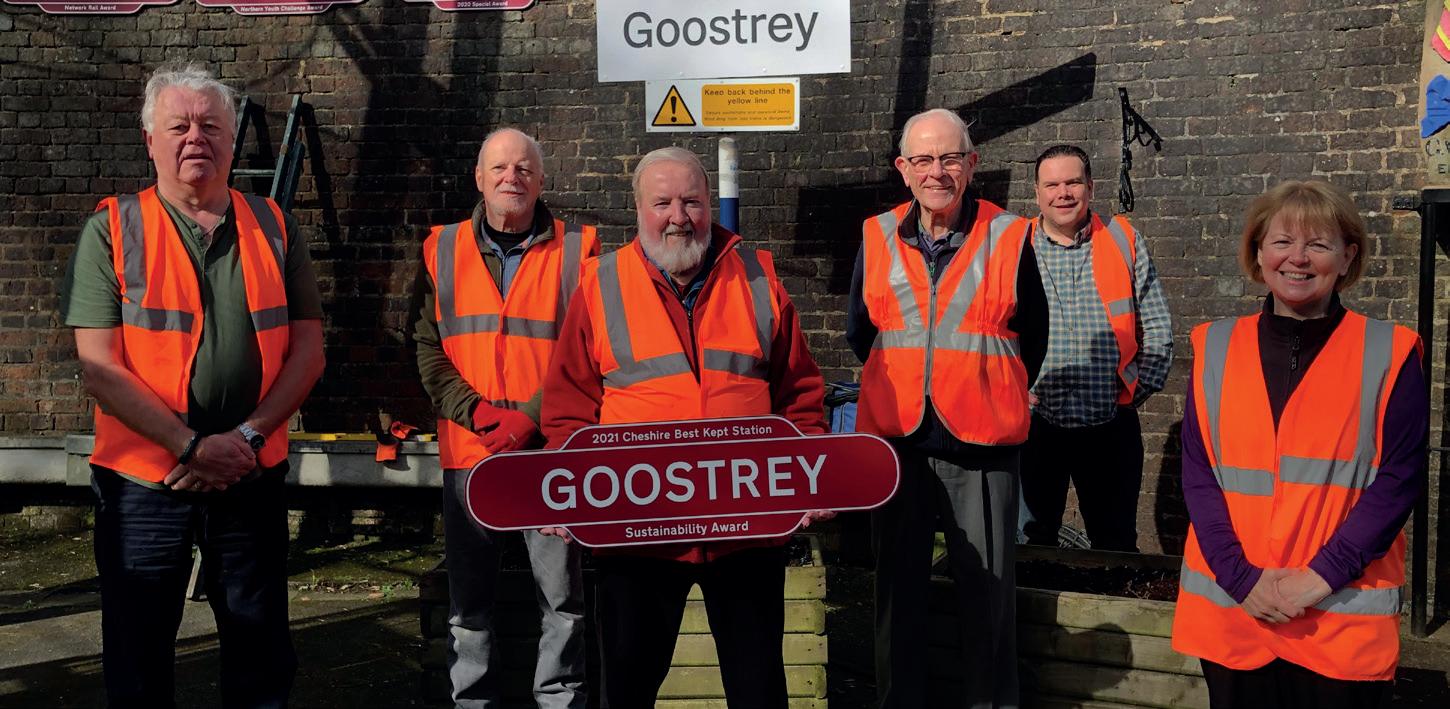
In other categories, Engineered Learning, Derwent Valley Line Community Rail Partnership and East Midlands Railway took the Involving Children and Young People Award for their Turning Around Vulnerable Young Lives Through Engineering project, while the Involving Diverse Groups prize was won by Gloucestershire Community Rail Partnership for its Getaway scheme, which enables young people from diverse backgrounds to use rail to access the health and wellbeing benefits associated with enjoying nature and the outdoors.
South East Lancashire Community Rail Partnership triumphed in the Community Creative Projects and Station Arts category for its Wigan Mural Project, and another piece of artwork, Kent Community Rail Partnership’s Sunflower Mural – Let’s Celebrate Differences, took the Small Projects Award.
Southeast Communities Rail Partnership won Most Effective Communications Campaign for its Go Green by Train CO2 Savings messaging, while the Great Little Trains of Wales and the community rail partnerships in Wales and the Borders scooped the Tourism and Leisure Award for their Wales on Rails Tourism Project, which encourages sustainable tourism across Wales via rail and other forms of public transport.
Heart of England Community Rail Partnership, Highly Sprung Performance, Coventry City Council and Avanti West Coast took the Best Community Engagement Project for Coventry Station Community Day – In Transit, and the Influencing Positive Change and Sustainability prize was won by the community rail partnerships involved in the Platform Rail Community Education Scheme.
The Friends of Buxton Station won the Station Friends and Adopters at the Heart of Communities Award for their Part of Something Positively Local project, the Friends of Goostrey Station took the Most Enhanced Railway Spaces prize for the Creative Hub at Goostrey Station, and the Friends of Irlam Station won the photo competition.
Julie Levy of South East Lancashire Community Rail Partnership and Bolton Station
Community Partnership was recognised in the Outstanding Volunteer Contribution category, and the Community Rail Network Board’s Special Recognition Award went to Richard Watts, chair of Community Rail Lancashire, for his tireless work and exemplary commitment in promoting the community rail movement nationally.
Deserved recognition
Jools Townsend, chief executive of Community Rail Network, said: “The Community Rail Awards give deserved recognition to community rail partnerships, groups, and volunteers across Britain. They emphasise the great value of community rail, helping to build stronger, fairer, greener communities, served and connected by their railways and wider sustainable transport networks.
“Despite another challenging year, the array of entries defied expectations, showing how community rail continues to strive to help people get the most from their railways and stations, and impact positively on local places and people’s lives. Our congratulations to all our winners, and thanks to everyone who supports and champions community rail, helping the movement to go from strength to strength.”

Hydraulic Engineering is a Bristol-based manufacturer of specialist lifting equipment. Established in 1971, we have been designing and manufacturing lifting equipment for use in automotive, aerospace and defence applications, and are now being asked to supply specialist lifting equipment for rail applications.

We have developed a standard range of tools for handling components up to one tonne in weight, although we have the technology to lift up to 40 tonnes. Increasingly, we are being asked to work alongside health and safety (H&S) teams to develop safe methods of removing large, often heavy and frequently awkward shaped components from carriages, locos and wagons.

The most recent example of this is where we have been asked to provide tooling for the safe removal and refitting of the Holset adaptor on the cardan shaft of the Class 15X unit, fitted with a Cummins diesel engine, in service with Great Western Railway (GWR) at Exeter. The Holset adaptor performs as an intermediate clutch on the prop shaft and it is prone to wear.
Before Majorlift’s involvement, this was a three-day job, requiring the engine to be dropped so the train was out of service and there was also potential for serious injury. Having worked successfully on previous projects, Majorlift was invited to review the procedure by GWR’s H&S team.
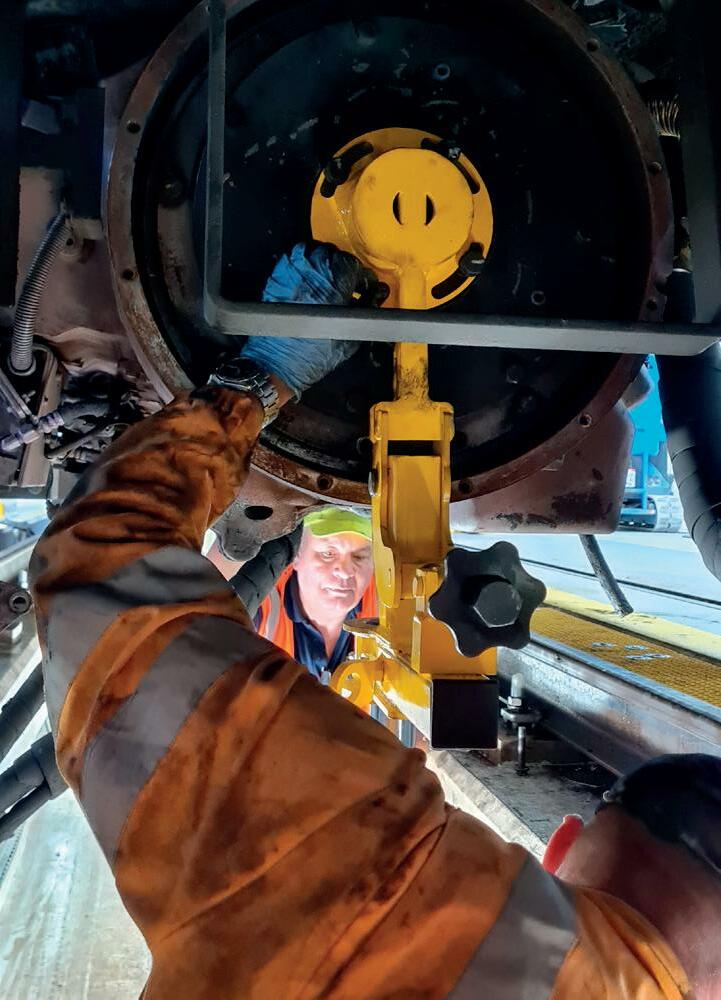
Following an initial visit, a tool was produced, offered up, adjusted for fit and taken off site for completion and painting. The final product was delivered to site and the GWR team were astonished to find the Holset adaptor can now be replaced by two people in under three hours. This freed up the train to get back into revenueearning service. Due to the way the adaptor is held and manipulated, it is a very safe operation, with much reduced risk of injury.
Another stunning feature is that the Holset tool is fitted as an attachment to Majorlift’s proven Rail Jack, and so is a highly economical adaptor, rather than a completely new tool. This makes the Rail Jack a productive and very costeffective addition to the workshop.
We have already designed adaptors for use with accumulators, fans, gearboxes and alternators fitted beneath carriages and engines.
Although our Rail Jack runs on the pit floor, we are encouraging designers to include a ‘jack rail’ in all new pits being installed. This allows users to futureproof their facility by building in the ability to run lifting equipment – such as our industry-leading commercial pit jack –along the length of the bay to support, remove and refit heavy components from anywhere under the carriage, wagon or locomotive being maintained.
Design and manufacture of all of our products happens in our factory just outside of Bristol. We use 3D computer modelling to ensure that components are not over stressed and will be
stable in use. We can also use the same software to model the underside of the rail vehicles and the pit to ensure we have the necessary space to carry out the work and to design mountings to fit the unit being serviced.
Our manufacturing facility uses modern CNC (computer numerical control) technology to machine 95 per cent of the product from raw materials, including all the rams and cylinders, power packs and air motors.
Retaining this in-house allows us to rigorously control the quality of the products and the lead times to our customers. We have invested in a highly flexible manufacturing process that allows cost-effective manufacture of small volumes of products.
Majorlift can produce large and small solutions, tailored to the customer’s needs –our largest application was to manufacture a bespoke lift for the removal and replacement of engines, gearboxes, cooler and fuel units from the Siemens Class 185 diesel train.
Probably our smallest product is a turnbuckle, used for securing the trailing arm on bogies being moved for servicing. For further information, contact us at info@majorlift.com or visit www.majorlift.com/majorlift-rail/
Majorlift Hydraulic Engineering is celebrating more than 50 years of lifting.
Managing director Tristram Southgate says demand from the rail sector is increasing
Although our Rail Jack runs on the pit floor, we are encouraging designers to include a ‘jack rail’ in all new pits being installed


UK will be doing something no one else is doing.” That’s the message from Professor Andy Doherty, chief technology officer for the Global Centre of Rail Excellence (GCRE), as work ramps up on the project that will provide state-ofthe-art rolling stock testing, infrastructure testing and storage and maintenance for the UK and international rail industry.

Particularly important to Andy is the fact that once complete, the former Nant Helen opencast site and Onllwyn Washery in Neath Port Talbot and Powys will put Wales and the UK at the very heart of 21st century sustainable transport innovation.
“We’ve already got a lot of interest from European companies, because this will be a unique facility whether it is testing trains, new technologies or infrastructure products, we hope they are all going to come here.” he said.
“Once it is open suppliers will have the chance to test their product properly to standardise it, authorise it, get it into use, test their trains, bring European products to the UK. We’ll also enable British companies to sell to Europe.”
A UK first GCRE will feature the UK’s first net zero railway and become the ‘one-stop shop’ for railway innovation, from research and development, through testing, verification and certification, to applied innovation on main line passenger and freight railways.
The facility will include two 25KV electrified test loops, one being a 6.9km high speed rolling stock track with a maximum speed of around 180km/h and the other a 4km ~60km/h test track.
“Science of years ago would be that you had control issues, you kept constant and you varied things to test them,” said Andy, who was previously at Network Rail.
“Normally on a rolling stock loop, you keep the infrastructure test constant and you vary the train. On the infrastructure loop you keep the train constant and vary the infrastructure. It’s a very simple concept and actually a real opportunity for the UK as we’ll be doing something nobody else does.
“The infrastructure loop will be able to run a train 16 hours a day and load 20 million gross tonnes a year. It is an aggressive opportunity to test infrastructure products to their full life and enable us to understand reliability, maintenance requirements and tease out those problems before they are put on the main railway.
offices, staff accommodation, shunting staff facilities and connections to the nearby main line.
There will also be state-of-the-art secure testing environments; equipment, systems and communications development facilities. Education, training, visitor and conference facilities and an industrial development zone are all envisaged in the wider site.
“We plan to be fully operational in 2025,” he said. “We hope that the sidings and other facilities will start coming online from the middle of 2023.
“Before that we have the huge process of moving three and a half million cubic metres of soil in the next two years and then putting the railway system in place in 2024 before being operation in 2025.”
“This will be a unique facility not just in the UK, but also in Europe. We can test composite bridges, overhead line, new types of sleepers, ballast, things that can actually lower costs on the railway. This is a big deal.”
Other facilities will include a dual-platform test environment, rolling stock storage and maintenance facilities, operations and control
Currently a wholly owned subsidiary of the Welsh Government, GCRE was established in 2021 with an initial commitment of £50 million. The UK Government is expected to confirm a further £8 million for research and development along with capital funding of £20 million. An investment prospectus to attract private funding for the project is also in development ready to be launched later this year.
“The
Andy Doherty, chief technology officer for the Global Centre of Rail Excellence, discusses the track ahead for the industry’s game changer
We can test composite bridges, overhead line, new types of sleepers, ballast, things that can actually lower costs on the railway
The Global Centre of Rail Excellence (GCRE) being constructed in South Wales is one of the most interesting and creative projects anywhere in rail today. The £250 million facility located in the Dulais Valley will become Europe’s leading rail innovation centre and will be a ‘one-stop shop’ for testing new rolling stock and supporting world-class research and development of new rail infrastructure, technologies, processes and skills – something that currently happens nowhere on a single site in the UK or on the continent.
Operational 24 hours a day, seven days a week, the facility will include two electrified test loops, one a 6.9km high-speed rolling-stock track and the other a 4km track for heavy infrastructure testing. Opening in 2025, it will become the UK’s first-ever net-zero railway, supporting the innovation needed to aid the UK’s path to net zero and, crucially, helping lower the costs of major rail infrastructure projects. Located on a former opencast mine in a region steeped in mining history, it will create long-term, high-quality jobs in an area of multiple deprivation and become a magnet for other, high-impact investments and R&D funding.
Rail is one of the UK’s critical national infrastructure assets. It employs more than 200,000 people and makes an annual £36 billion contribution to the UK economy. Prior to the pandemic, UK railways ran more than 20,000 services on an average day and, across the country, the UK has more than 21,000 track miles and associated infrastructure to maintain and upgrade.

The UK and Europe have lacked an integrated, single-site facility to test rail infrastructure, rolling stock, signalling and new technology and be a single site home to worldclass research and development.
That causes a number of significant problems across the industry. Rolling stock is often tested in partial UK sites or oversubscribed European facilities with major additional costs for manufacturers in shipping trains and kit overseas.
The nearest major infrastructure testing site is in Colorado in the USA, so it is consequently only available to small parts of the industry that can afford the cost of testing at such a longdistance facility.
Operators in the UK often have to rely on inadequate fallback options such as testing on the mainline, which drains capacity for other activity.

But while our economy, our lives and our country rely on this network, there has always been a missing piece of the jigsaw in rail testing and, particularly, infrastructure innovation.
This has major consequences for the efficiency of the network and for suppliers developing new technology. It can also impact wider government policy ambitions, including the UK’s path to decarbonisation.
South Wales is set to be the location of a new railway testing and development centre that will offer unique opportunities to the railway industry
“Rail is one of the UK’s critical national infrastructure assets”
Projects such as HS2 and Crossrail have exemplified the challenge, hitting national headlines in recent years after having been impacted by significant delays and budget overruns, partly contributed to by a lack of testing and integration facilities. GCRE is not a silver bullet to these problems, but it can be part of the answer, helping the industry tackle the innovation challenges it faces.
Phasing of the Project Outline planning consent for GCRE was granted by the two host local authorities, Neath Port Talbot Council and Powys County Council in 2021. This allows for construction of the railway and permission to operate the facility 24/7. A range of consultants and contractors are now working in an alliance to design the site and begin preparation for construction in early 2023.
The project is currently split into three core phases. Phase one will see the creation of sidings for rolling stock from the middle of 2023. From 2024, phase two will see the building of two electrified test loops, together with supporting infrastructure and buildings. The final phase will see expanded stabling, maintenance, and commissioning facilities along with research facilities, hotel, and business park. Construction will be completed by the middle of 2025.

GCRE has been set up as a Special Purpose Vehicle that is currently wholly owned by the Welsh Government, with plans to be majority owned by the private sector next year. The board of directors is chaired by Debra Williams and the chief executive is Simon Jones.
The Public Policy Benefits of GCRE
Having a dedicated facility such as GCRE, where single site, integrated testing can take place, will have multiple benefits for rail, filling the strategic gap in the UK and European industry for a place to undertake world-class research and innovation.
It can support governments to gain stronger assurance of major rail project timescales and ensure more effective cost management of schemes through greater testing of new technology and integration before deployment. Crucially, it will also help the industry contribute more effectively to the UK’s path to net zero through greater innovation and faster support to market of new products.
Importantly, for the local community in which the project sits, it will support the creation of high-quality jobs, skills and start-up growth potential in an area impacted by more than four decades of de-industrialisation.
Working with Partners
GCRE is a project with strong support from both the Welsh and UK governments and the two local authorities in which the project sits. The Welsh Government has committed £50 million and the UK Government £20 million, with a further £7.4 million being provided through Innovate UK R&D funding.

GCRE is working with international partners as it develops its facility. In the summer, GCRE signed a collaboration agreement with US-based MxV Rail, committing to collaborate and share technical expertise relating to design, engineering, procurement processes, safety and operational best practice. The agreement enables teams from both sides to work together to exchange information, compare knowledge and support clients, giving GCRE access to facilities and expertise as MxV moves to its new, purpose-built site in Pueblo, Colorado from September this year.
In September, members of the GCRE senior team attended InnoTrans 2022, Europe’s largest international trade fair for transport technology, held in Berlin, to engage further with the industry. At the trade fair, GCRE signed an agreement with the University of Birmingham’s Centre for Railway Research and Education (BCRRE) to partner on R&D and innovation activities connected to the GCRE site. The partnership will involve Welsh universities, including Cardiff University and Swansea University, and will see BCRRE establish an R&D centre on site in South Wales as well as providing technical support to projects taking place at the centre.
A good example of the innovation GCRE could help facilitate came in Berlin itself as it signed an agreement with The Orange Train Wash company to collaborate and promote the environmental and commercial benefits of the innovative new train washing system developed by the company.
“Projects such as HS2 and Crossrail have exemplified the challenge, hitting national headlines in recent years”
The two companies are working together to have the first system installed at GCRE, which will lead to more efficient winter washing and more accurate reporting of carbon and water savings. The system costs significantly less to buy, install and run for operators, handling 60 trains a day with an individual carriage taking just 22 seconds to clean.
At InnoTrans, GCRE also finalised a new deal to purchase a fleet of three Class 360/2 EMUs from Rail Operations Group. The units, which were previously used to operate the Heathrow Connect services on the route to Paddington, will eventually be located and run at the new GCRE site as part of its infrastructure testing loop and wider facilities being designed into the site.
Discussions with partners at InnoTrans showed that there is substantial market interest across the UK and Europe for the benefits a ‘one-stop shop like GCRE can provide for the industry. Discussions about investment and possible collaborations took place in Berlin with a range of partners, highlighting the appetite for future commercial tie-ins and a strong customer base for GCRE.
International interest in the project was ably demonstrated when GCRE signed a collaboration agreement with the Singapore Land Transport Authority earlier this month. Singapore LTA is constructing a new Integrated Train Testing Centre (ITTC) that will support the testing of trains and railway systems in Singapore. The agreement will see both parties collaborate and exchange information in the building of both new facilities.
In late September, GCRE completed the purchase of the land at the Nant Helen site including the washery. The 700-hectare site –the same size as Gibraltar – is now owned by GCRE Ltd.
The purchase represents a key milestone
in the project, paving the way for the start of construction works and Welsh Government Minister for Economy Vaughan Gething came to visit the site in October to mark the moment.
Momentum was further enhanced when GCRE held a ‘Meet the Buyer’ event on 2 November in Cardiff City Hall with potential suppliers and contractors for the innovative project. More than 250 individuals from across the supply chain signed up, learning more about the range of opportunities to get involved – from the development of active railway systems to the construction of commercial buildings and the development of an energy system for the site. Those wanting to know more about the project and the opportunities to get involved can get in touch at supplychain@gcre.wales
The following day, GCRE helped Innovate UK launch its Innovation in Railway Construction competition, offering the opportunity to access up to £7.4 million of funding for innovation ideas that can be tested at the GCRE facility. The funding is being provided by Innovate UK and BEIS, with applications for the fund open until 14 December. The event was kicked off by Welsh Minister Vaughan Gething, together with Innovate UK and BEIS officials, and included speakers from Network Rail, Transport for Wales, Industry Wales, HS1 and HS2,
Two new non-executive directors have been appointed to the GCRE Board - Gail Hawthorne and Simon Blanchflower CBE. Gail Hawthorne is a commercial lawyer and former interim Group Legal Counsel for Scottish Water. Simon Blanchflower is former CEO of the East West Railway Company and was Deputy Chair of the London Legacy Development Corporation following the 2012 Olympics. The appointment was announced on 2 November, along with that of an experienced new Director of Implementation, Rob Thompson.
The GCRE team has been working with Ernst and Young and partners over the last few months to launch a major private equity raise for the project. The plan is to secure private finance and supportive partners that can work with the GCRE team over the next few years to deliver the project master plan.

With strong and growing commercial appetite for a new testing and innovation facility to fill the strategic gap in rail, the hope is that investors will see GCRE as a strong investment proposition. The process is expected to begin later this month and conclude in the Summer of 2023.

“Discussions with partners at InnoTrans showed that there is substantial market interest across the UK and Europe”
Automation, digitalisation, and cybersecurity all go hand in hand. As your operations become more connected, data-driven, and autonomous, your exposure to cyber threats increases, and threat actors become very knowledgeable of these new vulnerabilities.

As the levels of cybercrimes continue to rise at unprecedented rates across the globe, the railway industry has become a desirable target for cybercriminals. Train control and monitoring systems, passenger information systems, signalling systems, and station infrastructure are all potentially at risk. These items can be compromised by the increased use of networked control and automation systems that can be accessed remotely via private and public networks.
Considering the risks presented above and many others that are not exclusive to the railway industry, on 15 September the European Commission introduced its proposal for a new regulation that sets out cybersecurity-related requirements for products with ‘digital elements’ throughout their lifecycle, known as the proposed Cyber Resilience Act (the CRA). Together with the second edition of the Network Information Security Directive (NIS2), these are the first legislation of their kind to be adopted at the EU level.
According to Cybersecurity Ventures, the EU’s Cyber Resilience Act joins several other pieces of legislation that aim to curb cybercrime, which already costs the global economy €5.5 trillion in 2021. By 2025, cybercrime damages are expected to surpass €10 trillion.
The proposed legislation mandates that products are designed, developed, and produced in ways that mitigate cybersecurity risks. It includes, for example, requirements to sell products in a secure default configuration, maintain a comprehensive product identification system, and ensure that exploitable vulnerabilities can be addressed through security updates, among other cybercrime disclosure rules.
What does it mean for the railway industry?
According to NIS2, rail is considered part of the critical infrastructure in all member states and is highly vulnerable to cyber attacks. Digital transformation has progressed faster than the industry has defined how to defend its technology from malicious attackers. The rise in interconnected assets exposes rail operational technologies to the same vulnerabilities as IT systems, and the overall attack surface for rail is more expansive than ever, giving hackers more opportunities to gain unauthorized access and create chaos.
Increasing reliance on third-party systems, which is common in the railway industry, also increases the risk of a breach through the rail supply chain. The disruption of critical infrastructure could result in catastrophic loss of life, adverse economic effects, and significant harm to public confidence.
Even though all products within the scope of the CRA must undergo a self-certification conformity assessment procedure, products with digital elements like the systems, solutions, and software used in critical infrastructure must undergo a more formal assessment with the involvement of a central EU body selected by the member states’ national authorities.
The draft of the legislation is very forwardlooking and addresses many megatrends, like artificial intelligence, that have become an integral part of the rail industry. Still, it gives you only a high-level directive of what is expected from companies and what we want to achieve regarding cyber security obligations. It doesn’t detail how to get there and how conformity will be assessed in practice. We immediately need harmonised standards to ensure companies can meet the requirements.
The CRA has three main themes: documentation, supply chain, and vulnerability management. Documentation, the proof of conformance with applicable cybersecurity regulation, is likely the easiest to achieve for railway companies as they have their existing practices from quality and safety management to rely on.
Niels Haverkorn, SVP and general manager for Connected Transport at Irdeto, writes about the Cyber Resilience Act and the common standards for cybersecurity services and how this change will affect transportation companies globally
IT systems, and the overall attack surface for rail is more expansive than ever
Managing cybersecurity documentation, conformity assessments and certifications will likely happen in addition to the current practices.
Supply chain management is another wellestablished process within the railway industry. Passing cybersecurity requirements down the supply chain and ensuring that relevant certifications are in place should not pose an issue. However, ensuring conformity and laying the foundation for integrating a supplier’s product into a cybersecure system will likely require new investment. Investment areas include key lifecycle management, penetration testing, software protection, and the software bill of material (SBOM).
Vulnerability management, especially across the supply chain, will be one of the critical areas of investment. The CRA carries an obligation not only to ship products free of exploitable vulnerabilities, but to identify, report, and fix new vulnerabilities during the lifetime of the products. While the regulation will create better visibility, it also leaves several open questions, such as who is responsible for the different activities and how the information will be shared.
The new cybersecurity legislation excludes any mention of open-source products. It overlooks the vulnerabilities present in opensource that have the potential to introduce significant threats to many industries, including rail. Unfortunately, that is one of the biggest cybersecurity challenges that have not been addressed in this draft legislation. Industry and regulators must continue working together to further clarify the responsibilities for opensource products.
Advertorial
As the following steps, it is now up to the European Parliament and the Council to examine this draft legislative act, after which economic operators and the member states will have two years to adapt to the new requirements. At the same time, the work on the NIS2 continues.
When lawmakers worldwide are looking to find answers to these problems, this piece of legislation will likely become a point of reference at an international level and not just at the level of the EU’s internal market.
This new cybersecurity draft proposed by the European Commission constitutes an excellent first step towards a more cyberresilient single European market and shows leadership as a region. It offers straightforward and understandable requirements for using connected devices, software and services, including for the rail industry.

By introducing lifecycle-spanning cybersecurity, the Cyber Resilience Act can help protect Europe’s economy and our collective security. The entire rail industry should welcome these new legislations as it is much better to drive change through regulatory mandates than as a reactive result of a cyber attack.

it is not secure, it is unlikely
be safe” – UK DfT
OT systems with safety functions are increasingly at risk from cyber security attacks, partly due to reliance on new digital technology.
Railways as infrastructure providers have a mandatory requirement under NIS regulations to ensure protection
against cyber threats. IEC 62443 is the de facto standard for industrial control system cyber security and will, in the next couple of years, be mandated for manufacturers, system integrators and operators.
However, the application of the standard is not tailored to the particular needs of the railway.
A technical standard from CENELEC, TS50701 was recently published that addresses this issue and integrates safety and security in line with the safety lifecycle in CENELEC EN50126.
We have set up clear and concise coaching and training to provide support to clients navigating this emerging challenge.
Services will include:
Blended and Face to Face Training Courses on TS507!0 and IEC62443;
Assessment of approach and maturity levels;
Route maps for improvement.
International organisations that are already receiving our expertise include Knorr Bremse, Hitachi, TfNSW, Downer Rail, Abellio, Voestalpine, Thales, Sener, CAF, and Alstom.
Digital Transit Limited www.digitaltransit.co.uk Call 07803 581 849 or email info@digitaltransit.co.uk
The draft of the legislation is very forward-looking and addresses many megatrends, like artificial intelligence, that have become an integral part of the rail industry
“If
to
Iknow a bit about how train drivers learn to drive a train. However, I know absolutely nothing about how an airline pilot learns to fly. I am aware though that if you want to teach a pilot to fly in the mist, rain or cold, then Manchester Airport must be an excellent place to learn.
I’m a nervous airline passenger and don’t fly well, and the anxiety isn’t eased by strong winds, a heavy downpour or low cloud. The cloud in Manchester just seems to linger over the airport endlessly, and no matter how often I fly I never cease to be surprised and a little taken aback that when you take off in the greyness of the towns of Cheshire and Manchester it is never long before the ascending aircraft creeps up through the cloud, to emerge into glorious, clear and bright sunshine. However bleak the airport skies look, the sun is shining above the clouds.
The clouds are not a solid layer that prevents a plane from ascending to the heights, and though these clouds will vary in height and thickness, they are not impenetrable. The metaphor is transferable to us. We all have layers of cloud above us. Sometimes that cloud is very low lying and we feel constrained into a small, narrow layer, and other times we feel the cloud is maybe a bit more patchy, higher cloud, with a little more of the sunshine peeking through. In the heart of our mental wellbeing one of the things that can be a key part of the clouds is trauma.
Trauma can hang over us like a fog or cloud that limits our ability to see everything around us. Trauma can be a disabling part of the life of anyone. Trauma can bring into our life a lowlevel cloud that hangs around us and as the fog hangs around our heads can reduce each day our ability to thrive and even feel able to exist in a world of human interaction and engagement.
Trauma is the reaction we have (in any number of forms) to an unwanted or undesired event. Something that we don’t want, didn’t ask for, or hope would happen occurs and creates a response within our physical, mental, emotional and social selves that can be harmful.
It is the traumatic event that creates the cloud that not only keeps out the sunlight that is joy, hope, and wellness, but that keeps us rooted on the ground.
In my job a significant number of the people that I work with are affected by some form of personal traumatic impact.
issues, illness affecting them or someone close to them, or many more.
Trauma is not desired, but it is very frequently present. How we recognise and respond to trauma is key to how we move forward and make our industry stronger and healthier. We cannot remove trauma, and we must never seek to make trauma (or the processing and response to it) a taboo word. We need to recognise it, acknowledge it and support through it. To steal the words from British Transport Police, we must see it and say it before we can sort it.
On the side of their professional life, this might include staff involved in a fatal incident on the railway. There may be situations at home involving challenging relationships, people may experience bereavement, financial insecurity, job
In the railway world I visit day by day I very rarely get called Michael. It’s my real, full name, it’s what my mum still calls me, but on the railway I get called a huge number of different names. I’m Mike to many, Chaplain to some, Padré to a few with a military background and I was once introduced (sarcastically, I think) by a station supervisor to a new member of staff with the words, “and here is God’s representative to Avanti West Coast…” I answer to all manner of things, but my name on my birth certificate is Michael.

Railway Chaplain Mike Roberts has been involved in almost 200 fatal or serious incidents where someone has sadly sustained life changing or life-threatening injuries. In his latest column he explains how we recognise and respond to trauma is key to how we move forward and make our industry stronger and healthier
Trauma can hang over us like a fog or cloud that limits our ability to see everything around us
We give the impact and consequences of a traumatic incident a variety of (often very valid) names, but we need to recognise that the incidents of trauma are more habitual than we sometimes think. Trauma affects people at a huge number of levels and the impact on our railway family is immense.
Railway Mission chaplains support so many through trauma and the response to it. In the North West, since I started as a chaplain in August 2018, I have been involved in almost 200 fatal incidents or serious incidents where someone has sustained life changing or lifethreatening injuries. In perspective, that number was the number of children in my year at high school.
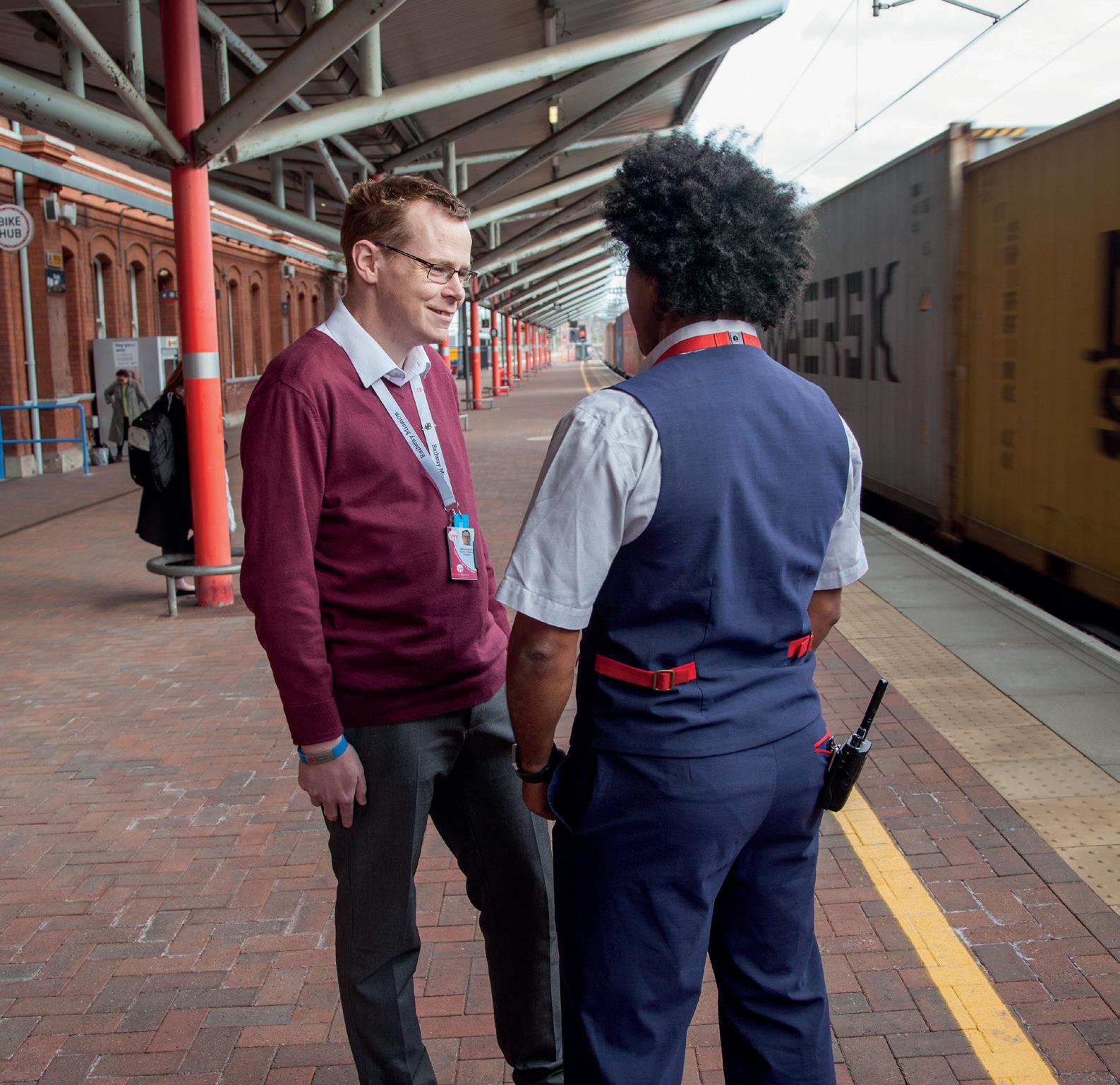
In each case those affected range from the driver and train crew to Network Rail MOM’s (Mobile Operations Manager), first responders from British Transport Police, witnesses and, on occasion, family members of the person involved. Each one reacts, processes, and manages trauma differently. It is not our job to describe someone’s response as valid or invalid (sometimes we may point out a response can be unhealthy). I have learned well (to steal an illustration from a lecturer in my university days) that trauma support is offered far better by a ‘guide on the side’ rather than a ‘sage on the stage.’ Those engaging with trauma will usually benefit more from the wisdom of a companion who asks questions and listens than the expertise of someone presenting with answers and instructions. Sometimes the most valuable things a chaplain does is shut up, be still, exist with someone in a place where words may not always be needed.
One of the greatest compliments I ever received was not “you did this,” or “you made me do this,” but simply the words, “you were there –and I didn’t realise that’s what I needed.”
I remember, as a child, watching magicians on television with magic wands, magic phrases and things disappearing, being cut in half, or amazing escapes behind a curtain. It was always more about the theatrical than the magical, but the performer always wowed the crowd by saying that the unbelievable would happen with a magic word. Both those experiencing trauma and those supporting others through it should be mindful of searching for, or taking magic words. No modern wellbeing version of abracadabra will resolve the spaghetti knots of disruption in life.
Bessel Van Der Kelk, in his highly recommended book, The Body Keeps The Score, speaks of the scars that trauma leaves on us in many ways.
And just like a scar from a cut to the skin, trauma needs recovery time. We can aid recovery (like we would for a cut) but we cannot rush or circumvent the process. Sometimes we put a sticking plaster on a serious wound in the hope of hiding it or stopping it interfering, but we must remember that trauma will often require appropriate treatment and not just an initial response.
Trauma can cause sleeplessness (potentially increasing risk at work), substance misuse or addiction, patterns of self-harm or self-isolation all of which can spiral out of control. It is for this reason that engagement with those who witness, experience or suffer trauma is essential.
A traumatic event cannot be treated like some responses to COVID-19 with the person isolated for two weeks before carrying on as before, without addressing the cause or consequence.
I want to draw to a close with a plea to consider, in your workplace, whether you could consider introducing (if you don’t have them already) a team of mental health first aiders (MHFA) to champion the mental health needs of your team, and to be able to signpost and support those in your workplace during tough times. MHFA England also do sessions on supporting line managers to be better equipped to deal with issues around mental wellbeing.
When speaking about trauma I often use the illustration of an iceberg. While we can see an iceberg and we know of the dangers associated with it, most of it is hidden beneath the surface of the water. Trauma will manifest itself in numerous ways, in ways unique to each individual – much like grief does. As colleagues, line managers, friends and family we may witness changes to behaviour patterns such as mood swings, irritability, apathy, a decrease in productivity or changes in social habits. However, under the surface of the water we may not see a great many changes in behaviours, which are potentially even more dangerous.
Trauma can be a trigger for mental health problems. It can affect people who have not had any other issues before, or it can be a ‘straw that breaks the camel’s back’ in some cases. Having colleagues and leaders able to recognise issues that have the potential to damage through trauma and trained to offer an initial, appropriate response is a tool to help us bring a greater resilience to our industry. Being prepared around issues of mental health offers up to a five-fold return on investment. It is not ‘money up the wall’, but money to nourish and grow our teams that we may all be stronger. www.railwaymission.org mike.roberts@railwaymission.org www.twitter.com/birdsnestsblog
Trauma can be a trigger for mental health problems. It can affect people who have not had any other issues before
Earlier this year Serco appointed Joel Sainsbury as the new director of Rail Technical Services, based in Derby. Six months on, Joel is building on past success and bringing experience in from other sectors to transform the way in which services are provided to the rail industry.
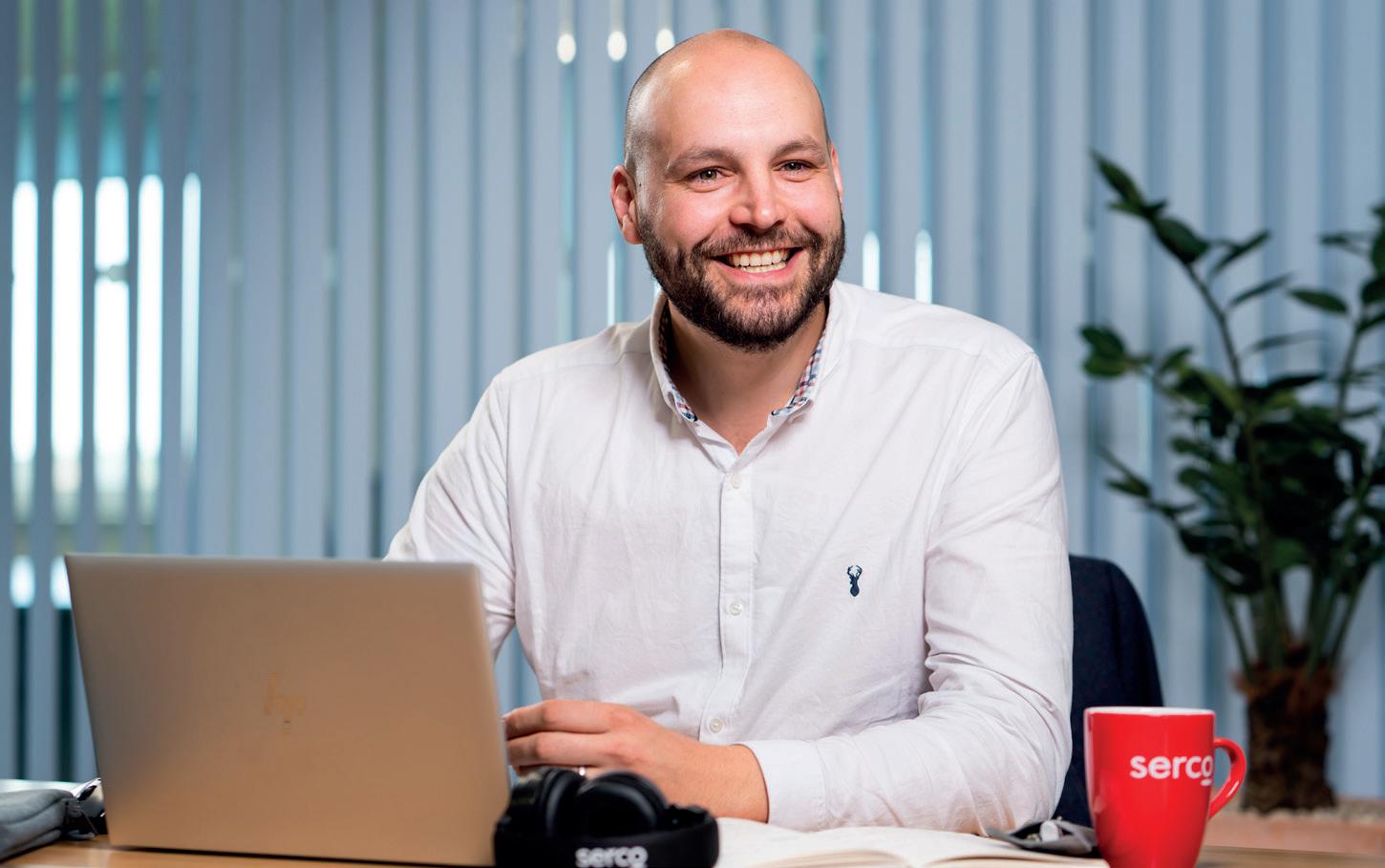
The past few years have challenged the way businesses operate and they’ve adapted quickly but, as a result, lost some elements of human connection that are vital to the way businesses work together effectively. It’s through building genuine partnerships where a deep bond is formed and, as people, we begin to feel seen and valued.
Delivering tailored solutions
That’s exactly the approach that Joel and his team at Serco Rail Technical Services are championing within their business and with their customers. Making a connection to first understand the challenge, then injecting pace – something that is often lacking in the industry – they are committed to delivering a tailored solution and enabling robust business, programme, and engineering decisions to be made.
Joel said: “With more than 50 years of technical expertise and a fresh approach, Serco Rail Technical Services can solve industrywide challenges through the provision of our engineering, training, and digital services.

“We deliver an instrumentation, test, and measurement capability that, if required, can be rapidly deployed to obtain targeted test data on rolling stock or infrastructure to enable our customers to make decisions quickly. A dedicated on-site non-destructive testing team undertakes both ad-hoc and routine ultrasonic, magnetic particle and dye-penetrant inspection across the UK to keep services running effectively. The materials and metallurgy test capability we have within the business assists our customers in understanding the root cause of component failures.
“Our British Institute of Non-Destructive Testing (BINDT) accredited training services team, with practical training facilities in Derby, offers Network Rail and the wider industry a wide range of rail, wheelset and bearing inspection courses led by a team of subject matter experts to provide an end user experience that sets individuals up for success.
Joel continued: “The digital services team provides the rail industry with data configuration control and access to more than 90,000 vehicle maintenance document records, 500,000 vehicle drawing records and over 800,000 vehicle component records through our internet-based Parts and Documentation System (PADSnet®), which is fully supported by a team of experienced configuration engineers.”
With a huge amount of discussion in the industry at the moment around innovation, collaboration and embracing digital technologies, the team at Serco Rail Technical Services are looking to build partnerships and deliver solutions... so what are you waiting for?
Visit https://www.serco.com/srts for more details.
Serco’s Rail Technical Services is transforming service provision in the industry to benefit everyone who depends on it
•
•
•
•
•
•
•







Two significant milestones have taken place on the Elizabeth line with the start of through running into the Central Section from 6 November, which followed the opening of Bond Street station on 24 October.
This means that the lines from Reading, Heathrow Airport and Shenfield are now connected to the Central Section.
Initially, the Elizabeth line opened on 24 May operating 12 trains per hour (tph) on the section from Abbey Wood to Paddington. At that point nine of the new central London stations opened, but the tenth, Bond Street, was delayed due to issues earlier in the programme.
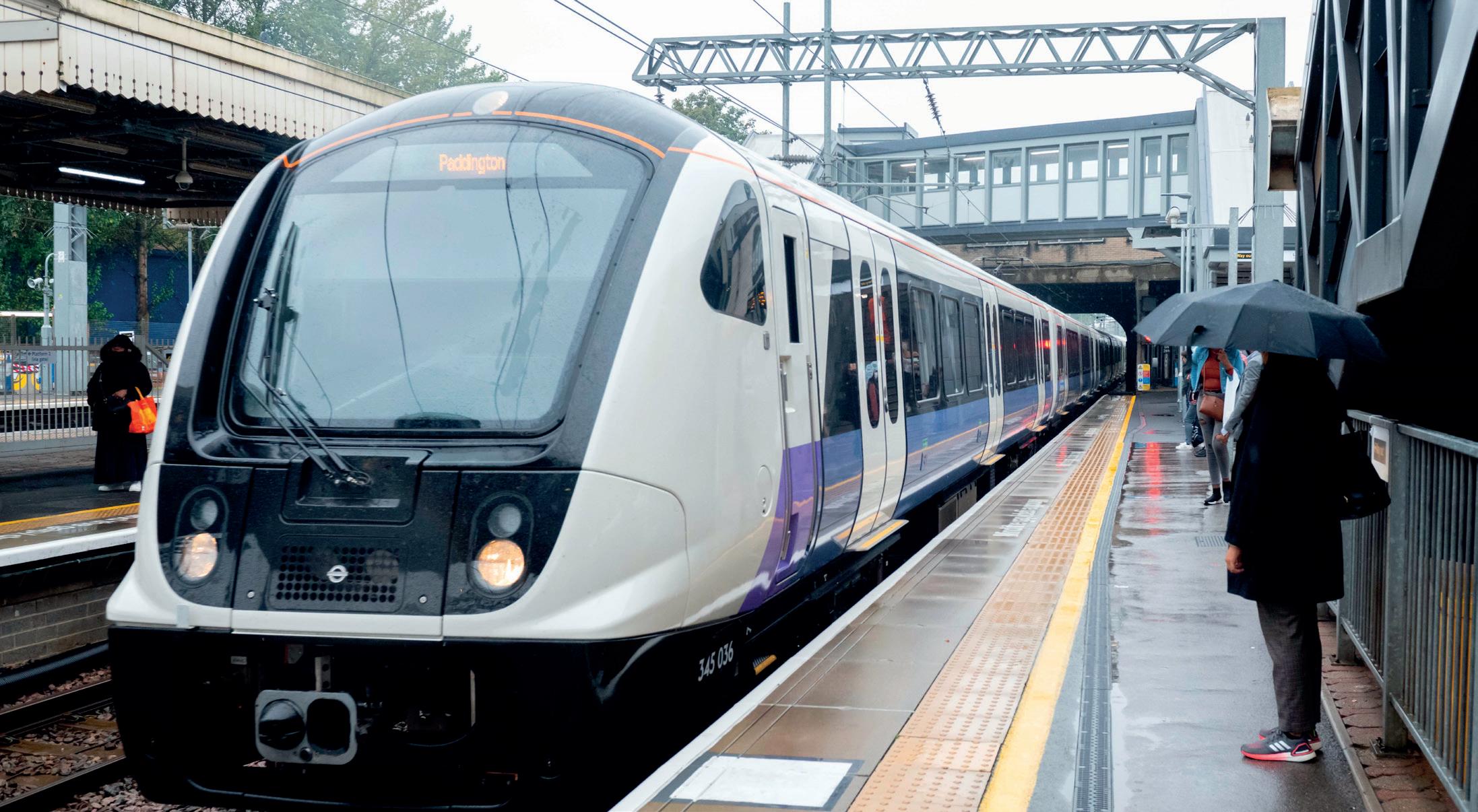
Transport for London (TfL) was also able to start regular Sunday services and extended operating hours and says that this will boost shopping destinations like the West End and Stratford in the build-up to the festive period.
Through running enables a frequency increase between Paddington and Whitechapel, with up to 22tph operating through the central section at peak time, dropping to 16tph at offpeak periods.
Elizabeth line chief operating officer Howard Smith explained to Rail Director at the opening of Bond Street station: “We’ve changed the plan slightly in the last few years, and we were going to do just the east and then the west, but that’s no longer the plan. We’re just going to take a slightly lower frequency of 22 trains an hour in the peak from November; that will increase to 24 trains an hour from next May.
“So it’s only a small sort of reduction in November. Other than that we’ve actually brought everything together earlier than we planned by bringing the west in at the same time as the east.”
For now, trains will operate from Reading, Maidenhead and Heathrow Airport to Abbey Wood, whilst trains from Shenfield will now run to Paddington. Passengers wishing to make through journeys can change at any of the central stations although given its layout, TfL suggests changes will be easiest at Whitechapel.
TfL says that the introduction of these new
direct services marks the introduction of a huge range of extra benefits, citing reduced journey times, additional capacity, greater accessibility and better connectivity to jobs, opportunities and leisure for communities across London and the south east.
For example, TfL says that passengers landing at Heathrow Airport will now be able to travel directly to Farringdon in 36 minutes and Canary Wharf in 45 minutes at weekends, and 40 and 51 minutes respectively during the week.
Speaking about the start of through running, Mayor of London, Sadiq Khan, said: “This development is a huge moment for the capital’s connectivity, revolutionising the way we travel across London, allowing people to travel from Stratford in the east of London to Paddington in the west of London in just 19 minutes, and Ealing Broadway to Canary Wharf in just over 30 minutes.
“Services running on Sundays through central London will make thousands of journeys quicker, easier and more comfortable.
In the next phase of the Elizabeth line’s opening, from 6 November trains are running from the national network into the Central Section. Richard Clinnick reports on what this development means, and what happens next

This new stage of the Elizabeth line will bring a huge boost to our city – including encouraging people to make the most of the capital and will help support businesses in the heart of our city. I’m so proud of this transformational addition to our public transport network. The Elizabeth line is helping to build a better London – a fairer, greener and more prosperous city for all Londoners.”
Secretary of State for Transport Mark Harper, said: “Through our £9 billion investment, it’s great to have contributed to a line which in just five short months has shown itself to be a staple of London’s transport network delivering over 60 million journeys and creating over 55,000 jobs.”
London transport commissioner, Andy Lord, said: “Linking destinations in the east and west directly with central London, alongside Sunday services and even higher frequency services, has been eagerly awaited.”
Dee Corsi, interim CEO at New West End Company, said: “We are thrilled that the Elizabeth line’s through service is fully operational, ensuring a seamless journey for all visitors to London’s West End. Since the initial opening of the line, and the opening of Bond Street station, we have seen a hugely positive impact on West End businesses. Looking ahead, it is predicted that the increased visitor numbers from the new lines will lead to around a 7 per cent boost in the West End’s annual performance by 2031, influencing between £700 million and £800 million a year in additional sales, really bolstering the West End’s recovery in a challenging economic climate.
“Connecting Reading, Heathrow, and Shenfield to the heart of the capital will give our businesses the momentum that they need as we head towards the busy peak shopping months at the end of the year.”
Despite the start of through running, TfL says that a small number of services will not operate directly into the Central Section and that some passengers will still need to change at London Paddington and Liverpool Street National Rail stations, particularly on early morning services.
There are also further engineering works planned, which will close the railway over the festive period. TfL says that these will enable final work to be completed ahead of the planned May 2023 launch of the full service. Indeed, the preparation for ELR300 is also well underway, with plans for a rollout over the upcoming festive period. This update is intended to deliver auto-reverse functionality, which is described as critical to the final 24tph configuration of the railway.
On the surface, major works at both Ilford and Romford stations have now been completed, marking the completion of major station upgrade work by Network Rail across the Elizabeth line system. These extensive station upgrades include new and refurbished entrances and ticket halls, new lifts, platform extensions, new and refurbished footbridges, a bay platform at Shenfield, and a complete rebuild of the station at Abbey Wood.
Ilford station’s new entrance building on Cranbrook Road opened on 1 September.
The new Bond Street station provides a new link to one of the country’s busiest shopping districts and has two entrances: one at Hanover Square, the other at Davies Street.
The new station is also designed to relieve congestion at Oxford Circus station and make the area more accessible, with step-free access from street to train.

Prior to opening, Bond Street transferred to London Underground, which will operate it.
The station features two spacious ticket halls with an abundance of natural light which lead passengers to the 255-metre-long Elizabeth line platforms. Both entrances feature columns that blur the line between interior and exterior spaces and help the station fit into its surroundings with the choice of materials: red sandstone at Davies Street, and pale Portland stone at Hanover Square.
Works at Romford station were completed on 25 August, which followed the opening of the passenger lift from the main ticket hall earlier in the month. This has delivered step-free access, alongside the new ground-floor ticket office, spacious ticket hall, and the addition of a new entrance on the northern side of the station.
The new station is step-free from street to train with two lifts, further enhancing accessibility on the Elizabeth line and across the TfL network. The station will accommodate nearly 140,000 Elizabeth line passengers daily, contributing to an overall station capacity of 225,000 across the Jubilee, Central and Elizabeth lines.
This development is a huge moment for the capital’s connectivity, revolutionising the way we travel across London

Beside the Bond Street station entrance on Hanover Square is Medici Courtyard, which is the first public courtyard to open in Mayfair for more than a century. This area of public realm was transformed by Westminster City Council as part of the Elizabeth line development in collaboration with adjacent property owners and developers.
Andy Byford, London transport commissioner, who left his role on 25 October, said when the opening of Bond Street station was confirmed: “The new Elizabeth line station at Bond Street will be the jewel in the crown of the West End’s transport provision. It will be yet another huge moment for transport in London and the bright future for the city that lies ahead.”
TfL had announced on 22 September that Byford would be stepping down from his role and moving back to the United States with his family. Before joining TfL he was president of the New York City Transit Authority, and before that CEO of Toronto Transport Commission.
Speaking exclusively to Rail Director, the former commissioner said: “I wanted to bow out with the honour of meeting the Queen in May. But what I said to Sadiq [Khan, the mayor of London] when I resigned was “I’ll do one last thing for you, governor, I will get Bond Street open before I go” and here we are.
“I knew that we were able to achieve this within six months. So that has motivated me highly. I would have stayed on for a few days if it had been necessary because I was determined to meet my promise to Londoners that we would get this station opened. This is our early Christmas present to the West End.”
Speaking to Inside Track at the launch of Bond Street station on 24 October, Howard Smith says that with the full opening on the horizon, thoughts have turned to the possibility of extending the railway beyond its existing boundaries. There has long been talk about Crossrail 2, but there have also been calls to extend the existing Crossrail network east of Abbey Wood to Ebbsfleet International.
Howard said: “There’s a number of studies including looking at adding an extension onto Ebbsfleet. We’re not close to breaking ground and doing physical works on that, that’s still at the study stage at the moment, and obviously that will depend on funding.
“The other extension that we will be doing is running trains out to Old Oak Common when HS2 opens. So there are a number of potential extensions and additions, and increases in the Elizabeth line going forward. We’re not done yet.”
He says that through the studies there have been a number of options considered, some of which include new build railway, to which he adds the caveat: “Obviously the challenge there is that they’re quite expensive.”
“But as soon as we get the money, I think we’re in a good place to start off almost as we were with this. The route is protected. That’s part of the purpose of doing the feasibility and design work to the stage that we have, that you can protect a route. Obviously, as we know from this line, protecting the route decades in advance is necessary and we hope it’s not decades in the case of Crossrail 2. That’s the key to being able to deliver.”
The alternative is to link into the existing rail network using Network Rail infrastructure and mix running between the Elizabeth line and existing national rail services. However, that is also more complex operationally and also more restrictive but it is less costly.
“There are certainly plans for Crossrail 2. An awful lot of work has been done of the sort that I go far enough back with the Elizabeth line to remember us doing for this line.
“Obviously that was paused a few years back prior to going to the parliamentary stage, so the plans are there and quite well worked up in feasibility terms. The challenge is obviously funding.
Meanwhile, the new interim transport commissioner, Andy Lord, told Rail Director at the opening of Bond Street: “My big focus is how we get passenger numbers up and get our revenue, and also our sustainability and environmental agenda,” he explained. There’s a lot to be done, and, of course, all of that is underpinned by becoming financially sustainable and operational by the end of March 2024.
“We do have a commitment from government that they are open to talking to us about how they would help with major rolling stock projects. So I’m keen to progress those talks as soon as we’re able to.”
These key dates for the Elizabeth line offer a tantalising glimpse as to what passengers can expect from May 2023. Finally, after years of delays, travel through London is about to become a lot easier for millions of people.

There are a number of potential extensions and additions, and increases in the Elizabeth line going forward. We’re not done yet












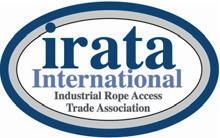
That was the message from Heather Waugh, a freight train driver at Freightliner, who was part of a panel discussing inclusivity at the recent Rail Forum Conference in Birmingham.
“Diversity is a fact, we all are diverse, but inclusion is a choice,” said Shane Andrews who leads Archway, Network Rail’s LGBT+ employee network, who was joining Heather, addressing the audience at the International Convention Centre (ICC).

“I remember standing up in a meeting explaining to 50 people, more senior than me, about the employee networks we were going to set up and at the end I said ‘any questions?’ and one of the most senior people in the room said ‘what about the normal people?’
Disgusted Shane continued: “During my time working in the railway someone senior said I was disgusting just because I was a gay man; he said this over dinner in front of my peers. This shouldn’t be tolerated and we should be giving everybody the opportunity they need to succeed. It’s proven people who can bring their whole self to work, like myself, are more productive and also safer.”
The panel was hosted by Neil Robertson, chief executive of NSAR (National Skills Academy Rail), who explained that from a representation point of view, progress had been made particularly when it comes to gender, with the number of females working in the UK rail industry increasing from eight per cent to 17. In terms of ethnicity, the railway is average, but work is needed in the engineering sides.
Panellist Pankaj Kapoor, operations director at RSS Infrastructure, said: “Inclusivity is about all of us and for me it really starts from the top and comes from the top. Our chief executive officer is very passionate about the subject and we drive that from the top and we talk about this subject at that level, raising awareness across the teams.”
Mike Roberts, railway chaplain at the Railway Mission, said: “Sometimes you need to have
leaders who are going to have the courage to walk with people at the back.
“We’ve got to have leaders who are courageous enough to recognise there are people in their businesses who haven’t grabbed onto this and to go back and say ‘come on we will work out what it takes to walk with you and bring you on’, because otherwise we are just going to stretch everything out and people at the back will stay there.”
“I joined the railways 13/14 years ago,” she said. “I was the only woman on site at the depot and it was automatically assumed I would be notetaker, tea-maker and order the sandwiches. It was quite a shock.
Standing up “Inclusion for me is allowing everybody to be able to stand up and say ‘this is me, this is my true self, take me as I am or don’t take me at all’. “It is all about acceptance, I love the fact that this industry has so many groups – Women in Rail, Muslims in Rail, all these groups are brilliant, but we shouldn’t need them. Why does this industry need these groups to promote inclusivity and diversity? Why is it something we are not just doing?”
Concluding the sessions, Tracey said: “Children cannot be what we don’t show them. It is all about engaging with kids from aged five, six, seven, showing them the careers the industry has got, showing them you’ve broken those glass ceilings and if you can do it they can do it.”
Mike added: “We create the culture around the stories we tell, of our experiences. We are getting stuff right, but we’ve got a heck of a long way to go and we’ve got to encourage people to tell those stories.”
Tracey Barber spoke openly and honestly about how the industry didn’t feel very inclusive when she joined, having moved from the manufacturing industry.“Make your company a place you are proud to work in, and an industry that someone you love will want to come and work in.”
Shane Andrews, Tracey Barber, Pankaj Kapoor, Mike Roberts and Heather Waugh were part of a panel discussing the importance of inclusivity
I was the only woman on site at the depot and it was automatically assumed I would be notetaker, tea-maker and order the sandwiches


In MPA’s last column, the professional services provider explored two options for those thinking about exiting a business – family takeover, and employee ownership. These are just two ways a proprietor can relinquish control of a business, but both options have one thing in common – the need to plan.
But, in a time when everything seems unstable and nothing is certain, what does planning mean and how can you actually stay focused on a long-term goal or goals that may be decades away? Stephen Mackinnon, MPA’s head of accountancy and tax, explains.

Planning for and across a 12-month period is largely about forecasting and reviewing performance so that course corrections can be made to keep everything on track, now.
Quick decision-making like this relies on having access to up-to-date financial information and understanding of business challenges – known, and unknown.
Thankfully, automation and cloud-based systems have made financial analysis much easier.
Platforms like Xero allow you to create bespoke management account reports, and if you work with a third-party accountant or professional services provider like MPA they should be able to give you what you need, and when, so that data becomes insight, and the power is placed in your hands.
Without having access to real-time performance indicators and market information, it’s difficult to react to challenges and things can quickly spiral out of control. Nail down your reporting processes so you’re not behind when you should be ahead.
If annual planning and reviewing allows you to make quick decisions for short-range gain, and we know that long-term planning is about the bigger vision, then it’s how you build, monitor and adapt medium-term plans that will really make the difference.
Medium-term planning should show you what you need to do to bridge the gap between shortterm success and reaching long-term goals. It’s also how you don’t lose sight of the long-term when immediate conditions become chaotic!
Depending on your timelines, medium-term planning can span anywhere from 18 months to your selected major milestone.
Another example would be if you’re looking to sell or shift majority shares in the long-term. Medium-term plans would need to cover how you’re going to maintain or grow the value of your company – and how that value remains once you’re gone.
If you need more revenue, do you need more staff; if so, do you need new premises? These aren’t tactics or short-term performance issues, but you do need to keep them in your periphery as milestones to hit to stay on the roadmap.
Finally, medium-term plans allow you to continuously learn from bumps along the way. It can be tempting to fix a problem temporarily and move onto the next thing, especially in times of great uncertainty, but instead, make it a medium-term goal to address things properly, and permanently.
If team training helped solve short-term productivity issues, for example, plan for that training to be rolled out regularly to new starters or wider teams once the dust has settled. You can’t know everything, but you can ensure you learn from your experiences.
Medium-term wins also feel more achievable than long-term goals, so tying those into the shorter-term key performance indicators is a good idea. See KPIs as ‘Key Performance Indicators’ for business health, and ‘Keeping People Interested’ measures for motivational health – particularly important when change is rapid and challenges keep coming.
If you have a strong vision in mind, then making informed changing to short-term tactics and being able to reprioritise medium-term milestones becomes much less daunting.
For example, if you as an owner would like to wind down your responsibilities within say seven years, then your medium-term plan might outline when and how you select, recruit, attract, train, or retain key individuals who can take over when that seventh year is reached.
Long-term planning ultimately gives you the confidence to be adaptable, leaving you resilient to external pressures – something incredibly important against this backdrop of turmoil.
Whether you’re struggling to navigate short, medium or long-term goal setting, planning or reviewing, a professional services provider like MPA can help. Get in touch today. Visit www.mpa.co.uk for more information
Stephen Mackinnon, head of accountancy and tax at MPA, writes about staying focused on long-term goals
Medium-term planning should show you what you need to do to bridge the gap between short-term success and reaching long-term goals
With over 20 years of Rail and Construction industry experience, our familyrun company provides expert advice and cost-effective solutions to all sectors looking for experts that they can rely on. Delivering safe and sustainable solutions at the forefront of innovation and technology, ensuring the highest quality results first time, every time. We can assist clients from advisory and design to compliance and delivery, providing tailor-made solutions to meet clients’ needs.
Installation of all Piled foundation - bored, driven & screw piles
Erection and installation of OHL Gantry structures (masts, booms)

RED, LOC and DNO foundations and platform installations (GI, Design & Install) Platform renewals and refurbishments Cess walkways and throughing routes
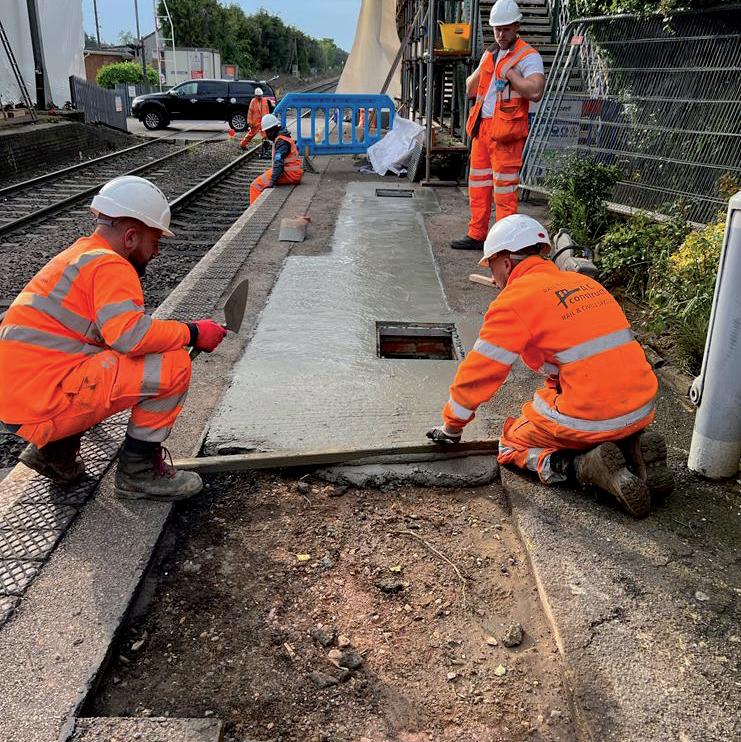


Fencing and Access stairways Site compound establishment and access road Trial Holes
Excavation and installation of concrete bases Embankment stabilisation & Cess retention De-vegetation Piling and Soil nails Rabbit Netting Gabian Walls


Withthe end of the year fast approaching, things are ramping up in the community with no sign of slowing! We have quite a lot to celebrate this month, including:
Reaching our 300-member milestone!
This is really positive news for the RBD Community (RBDC) and its members, as the more members we have, the stronger we become as an entity for members to network and collaborate. We were delighted to see that community member Daniel Brock of CB Frost won our LinkedIn competition (12-months membership) after correctly guessing the answer to our question ‘how many subscribers are there to the daily rbd.com newsletter’ –which is of course 73,000.
Combined membership offer: Railway Industry Association (RIA) and RBDC working together for the benefit of members – Both membership organisations are independently recognised for the positive difference they make to businesses in rail.

By joining forces for the purpose of simplifying membership and working smarter through the power of collaboration, existing members and new members will now be able to take advantage of a discounted membership package.
This combined membership offer gives your business access to the valuable membership benefits of being part of the UK’s leading rail trade association RIA, ‘the voice of UK rail’, in addition to all the profile raising and business support benefits provided by the RBDC.
First affiliate members – Global Centre for Rail Excellence (GCRE) and Morson’s Talent became our first affiliate members of the community.
Affiliate members are organisations that want to actively demonstrate their commitment to supporting SMEs and members in the RBD Community.
We plan to launch Market Place in early December to further enhance the benefits of One Place. This will be packed with special offers and discounts provided by other members of the community.
RBD Community events programme for 2023 – We will be rolling out a series of webinars
focused on sustainability and innovation via the RBDA (Rail Business Daily Advisory) Special Advisor Network in addition to the announcement of four RBDC networking events to take place from January 2023 onwards. We will also be offering some very attractive sponsorship packages for these RBDC networking events.
We were also delighted to attend Achilles Connected Wales: winning sustainability contract opportunities event and heard from a fantastic line-up of engaging speakers who spoke so passionately about Wales, sustainability, procurement, net zero, innovation and ESG, and the railway overall. The conversation in the room was pragmatic and open and it is clear that some great work is taking place, driven by Achilles, Industry Wales, Llywodraeth Cymru / Welsh Government, GCRE, Transport for Wales, Great Western Railway (GWR) and Network Rail Wales and Western to support the supply chain to meet net zero targets as well as shaping up the opportunities for the supply chain. The big message of the day was that organisations need to move away from a token five per cent to 10 per cent for sustainability and incorporate sustainability goals into the specification itself and the associated evaluation criteria. For more information on the RBD Community and how to join, please go to community.railbusinessdaily.com/we-are-your-champion-in-rail
 The RBD Community has plenty to celebrate this month. Eli Rees-King explains more
The RBD Community has plenty to celebrate this month. Eli Rees-King explains more
Interact Access high quality networking and make new connections

Insight Take advantage of unlimited access to market intelligence, news, reports, and business resources Introduce Find your perfect business partner and b2b matchmaking
Inform Knowledge sharing, thought-leadership, and resources all in One Place

about your business;

Alstom puts into service four stations on Cairo Metro Line Four new stations along the Cairo Metro Line 3 (phase 3), reaching from Attaba to Kit Kat, have been successfully supplied, tested and signalling, centralised control and driving modes commissioned by Alstom. The new infrastructure will enable more than 30,000 commuters to travel per hour, in both directions. Ramy Salah, managing director of Alstom Egypt, said: “Alstom is proud to have provided its Urbalis signalling solution for line 3 of the Cairo Metro, phase 3A.”
Carbon neutral future on track as ABB helps electrify Lithuania rail ABB builds on its track record in sustainable rail innovation with a new contract for a 25kV power solution to electrify a 100 per cent carbon neutral rail line for Lithuanian Railways. The solution will help Lithuania power over a third of its rail network by 2030, with 730km of carbon neutral rail line crossing the country, completing the electrification of the busy corridor between the capital Vilnius and the seaport of Klaipėda. As part of the project, which is being delivered via a joint venture partnership between Elecnor and Inabensa, ABB will design and supply 25kV equipment packages for eight 230/25 kilovolt (kV) traction substations, eight autotransformer stations and three sectioning posts.
Etihad Rail, the developer and operator of the UAE National Rail Network, has completed the tracklaying works of the main line in Sharjah and Ras Al Khaimah as part of the last package of stage two of the project.
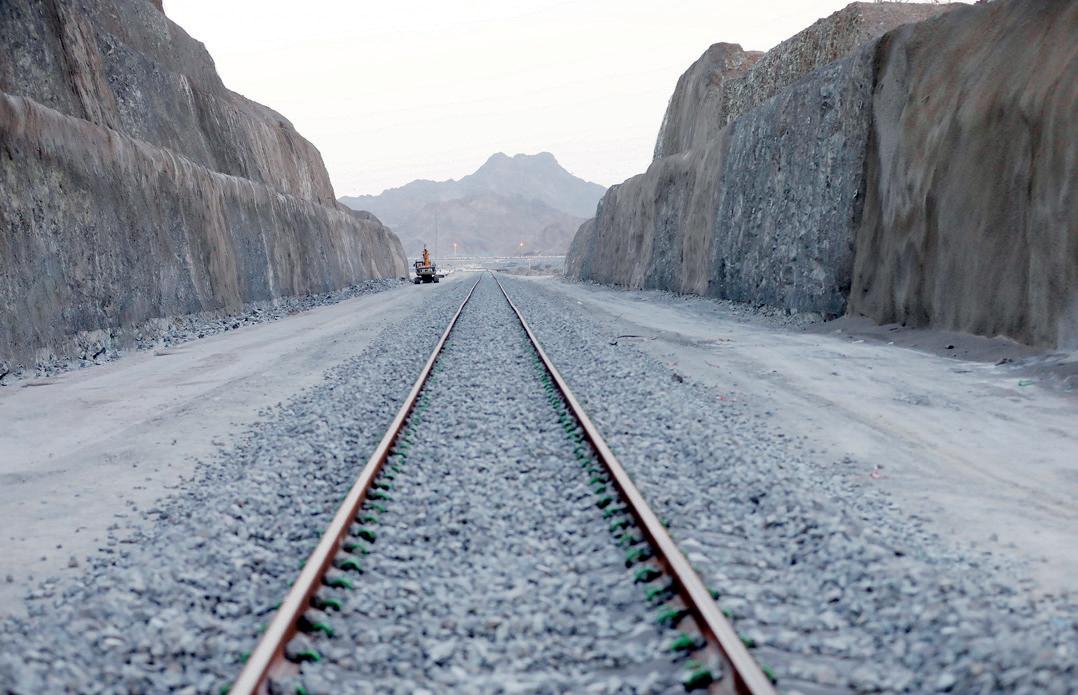
The main line of the network extends from Ghuweifat on the border of the Kingdom of Saudi Arabia, and passes through the emirates of Abu Dhabi, Dubai, Sharjah and Ras Al Khaimah.
The line in Sharjah extends over 45km and is part of the last package of the project, which totals 145km in length. Connecting the Emirate to the main line recorded more than 11.7 million work hours in 25 months, with around 2,900 workers and engineers taking part in the project. The line in Ras Al Khaimah, which extends over 5.7km and connects the emirate to the main line, recorded more than 1.3 million hours in 25 months, by around 350 workers and engineers.
The project has had its challenges – the line passes through 6.9km of the Al Hajar Mountains, meaning engineers had to develop nine tunnels, 54 bridges and 20 animal crossings. A 1.8km heavy cargo tunnel also added to the complexity.
These challenges were given a royal seal of approval though, with a visit in May by His Highness Sheikh
Theyab bin Mohamed bin Zayed Al Nahyan, chairman of the Abu Dhabi Crown Prince’s Court and chairman of Etihad Rail, who attended the site to inspect the latest developments.
Tracklaying continues in the emirate of Fujairah within the upcoming weeks, bringing it closer towards the completion of the UAE National Rail Network as per the set schedule. These works seek to connect the emirates via rail and help deliver the biggest sustainable transport system in the UAE
This comes in line with the goals of the National Railways Programme, the biggest integrated sustainable transport system in the UAE, which seeks to connect the emirates via rail and accelerate the country’s sustainable economic development.
Engineer Khuloud Al Mazrouei,
Rail, said: “We have made remarkable strides by completing the main works for the UAE National Rail Network and connecting it to the main lines in Sharjah and Ras Al Khaimah, bringing us closer than ever to completing the network on schedule and achieving our objective of providing an efficient and sustainable transport network that links the country’s emirates, and connects the UAE with the region.
“This plays a key role in opening up new prospects in the logistics and transport industry, driving social development, and providing promising economic opportunities in the UAE and the region across a range of sectors.”
The final designs for a manufacturing facility in Maryland have been revealed by Hitachi Rail.
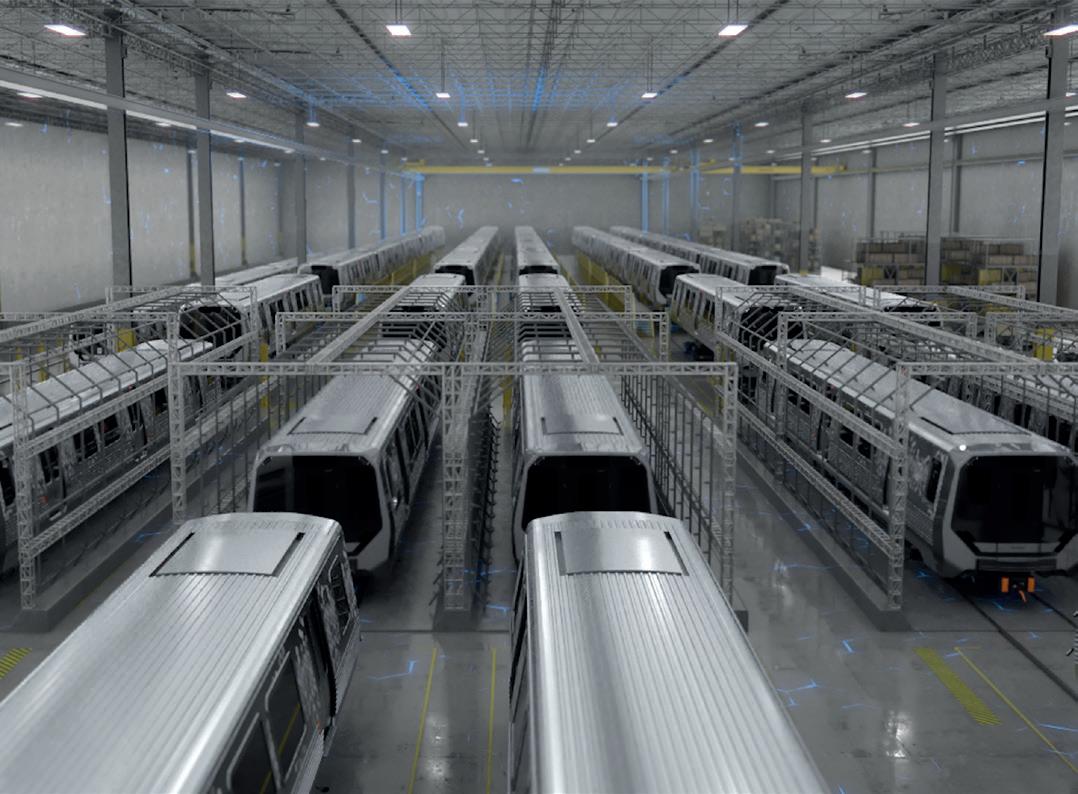
The $70 million factory, located in Hagerstown, Maryland, will be capable of manufacturing trains for railways across North America, beginning with new fleet for Washington DC Region’s Metro, and will cover a 41-acre site.
Including an 800-yard test track, the facility will sustain 1,300 jobs when complete, bringing major economic benefits to the DC, Maryland, and Virginia region.
Construction of the new factory is progressing well, with US construction firm Ryan Companies appointed as the lead developed. Land clearance, creation of the concrete deck and the majority of the external concrete walls are complete, with the factory on schedule to open in early 2024.

Once complete, the factory’s 1,300 team members will have plenty to keep them busy. A contract for 256 new 8000series railcars for Washington Metropolitan Area Transit Authority (Metro) was announced in March 2021 and includes options for up to 800 cars to be built.
When fully up and running, the factory will be able to complete up to 20 railcars per month in a single shift, with the capability to
produce a wide range of trains from metro to high-speed services.
Andrew Barr, group CEO, Hitachi Rail, said: “With construction of our new train $70 million factory on schedule and progressing well, we are one step closer to delivering a new, highquality fleet for the Washington DC Region’s Metro. It is exciting to be able to release the final designs of our new facility with its cutting-edge Lumada technology. Manufacturing pioneering trains is core to our business and this factory, with its new workforce, will have the capability to build trains for all of North America.”
Maryland Governor Larry Hogan said: “It is exciting to see the new Hitachi Rail factory coming together as the job creation potential and associated economic benefits will
be an absolute game changer for Washington County as well as the entire region. This transformative project is further proof that the Hagerstown region is a major logistical centre for rail transportation with unparalleled
connections to the north-eastern United States, and is yet another shining example that Maryland is truly open for business.”
Congressman David Trone said: “This new factory in Hagerstown will deliver over 1,000 goodpaying jobs to the community and strengthen our public transportation options across the entire Metro system. After looking at Hitachi’s final plans for the factory today, it’s clear that this effort has an incredible return on investment for Marylanders. It’s crucial that public transportation allows folks to get to work on time, pick up their kids, or just get from point A to point B. I welcome Hitachi Rail to our district and look forward to the economic opportunities this facility will bring to Washington County.”
TLevels are two-year courses, taken after GCSEs, that are broadly equivalent to three A Levels. The courses were developed in collaboration with employers and education providers so that the content prepares students for entry into skilled employment, an apprenticeship or related technical study through further or higher education.
Available at selected colleges, schools and other providers across England, T Levels offer students practical and knowledge-based learning and on-the-job experience through an industry placement of at least 315 hours – approximately 45 days.
This practical approach to education has attracted the interest of the rail industry. HS2’s construction partner Balfour Beatty VINCI (BBV) was one of the first big companies to back the new T Level when it was introduced. Following the success of its partnership with Walsall College, which saw seven students progress straight onto degree-level apprenticeships supporting HS2’s construction, BBV expanded its commitment this year by offering over 30 placements to students at four Midlands-based colleges.
Pupils from Walsall, Thomas Telford in Wolverhampton, Dudley and Solihull colleges will begin their first industry placement on HS2 in November, and this year’s programme will be extended to those studying IT as well as construction. BBV expects the students it hosts will play an active role on HS2; learning project management techniques and how major infrastructure schemes are developed, as well as developing an understanding of environmental design engineering, building information modelling (BIM) and geospatial surveying.
When it launched its Skills, Employment and Education Strategy in 2018, HS2 set a commitment to upskilling the next generation and ensuring that the project leaves a lasting skills legacy. Working through its contractors and the thousands of businesses within its supply chain, HS2 aims to support at least 2,000 apprenticeships, provide two-year graduate training programmes and deliver Science,
Technology, Engineering and Maths (STEM) focused curricular activities in schools along the line of the railway as it extends north and south of the Midlands.
“As HS2’s construction partner, we have a responsibility to make sure communities across the West Midlands feel the full benefit of this major project. These placements go some way to achieving that, by giving students the opportunity to gain valuable experience and equipping them with skills they couldn’t learn in the classroom.
Inspiring generations
“We’re big supporters of the T Level programme, which we believe can inspire the next generation and act as a springboard for future careers in construction.”
T Levels form part of that programme, and 33 youngsters from the West Midlands are now taking their first steps into the world of work as they begin their T Level industry placements on HS2 with BBV.
Shilpi Akbar, head of stakeholders and communities at Balfour Beatty VINCI, explained:
Julie Venn-Morton, HS2’s senior legacy manager for the West Midlands, added: “The success of HS2’s first T Level industry placement scheme, which resulted in just under half of the students securing a full-time job, has increased demand from both the colleges and young people wanting to partner with us.
“The chance to start building a career on HS2 as a teenager is without doubt a once-in-a-lifetime opportunity, and we wish this year’s cohort every success with their studies and their industry placements.”
 Josh Baker, Yusuf Naeem, Libby Parker and Nathan Fadiran O’Connor are beginning their T Level industry placement
Josh Baker, Yusuf Naeem, Libby Parker and Nathan Fadiran O’Connor are beginning their T Level industry placement
In a bid to provide young people with the skills that industry needs, the government launched T Levels in September 2020
We’re big supporters of the T Level programme, which we believe can inspire the next generation and act as a springboard for future careers in construction


Alothas changed in 30 years, but one thing that has remained a staple part of life has been the annual Rail Freight Group’s annual conference. This year was no different, with the similarities not ending there.
“I am really proud of that long connection and also that for 30 years we’ve found the very best of rail freight to discuss and debate,” said Maggie Simpson, director general of the Rail Freight Group (RFG).

“A lot has changed in 30 years; I don’t imagine our first chair had to remind guests to turn their mobiles off, and hybrid conferences were only found on Tomorrow’s World. When you look back at 1992 there are quite a few similarities, not least a recession, struggles with inflation and interest rates, and the Black Wednesday stock market crash. The railways were also on the verge of major structural change, as we are now with rail reform. I don’t imagine it was the easiest time to be in rail freight, nor perhaps is it today.”
The conference, organised by Waterfront, explored how to maximise growth opportunities for the industry, exploring key areas including growth through construction and the development of strategic rail freight interchanges.
Maggie said: “This year has definitely been mixed. I know members are struggling with economic pressures, global volatility, high inflation and fuel costs making business more expensive to run and biting on demand.
“There is also the cost of living crisis, industrial action and the political turmoil, with a new government and public spending challenges, along with rail reform. But it is not all bad news, far from it. Over the year there has been a constant flow of new services starting up and expanding. That includes new intermodal services, domestic trains, construction services, and progress with timber and products like slate waste.
“New terminals are being built and opening up, including Highland Spring which had its official launch this summer, and there is committed new investment for rail freight including a recent announcement from ABP (Associated British Ports) on a £25 million investment at Southampton.
“We’re also seeing continued support from government, which issued its future of freight plan over the summer and is supporting the Generation Logistics skills campaign.”
Among the speakers at the event last month included Helen McAllister, freight programme director for the Great British Railways Transition Team, John Smith, managing director at GB Railfreight, and John Larkinson, chief executive at the Office of Rail and Road.
medicines to the big bulk products that cannot possibly go by road without causing major environmental issues and problems for residents who live near the sites concerned. We should be proud to talk about the role freight is playing and the huge future it has particularly as we look to deliver the two priorities for the Secretary of State of driving economic growth and decarbonisation.”
Kevin told the audience that he is “very keen and interested” to hear how we can look at making more of our routes suitable for freight and ensuring our main economic hubs have the vital freight railway connections they need.
There was also a video message from Rail Minister Kevin Foster, who said: “It’s freight that really drove our railways creation and provides some huge opportunities for growth in the future.
“Every day vital materials are carried from
He said: “At a time when how we move goods around the country is facing certain challenges, particularly with road haulage, we should look at that not just as a challenge for them but as an opportunity for us in the rail sector to get more freight back on our rails. Rail freight should not be the thing we talk about after passengers, it’s the thing we talk about with passengers at the heart of a future railway and a plan for Britain that will deliver a growing economy, prosperous communities and a rail network that we can all be proud of.”
Maggie Simpson OBE, director general of the Rail Freight Group, speaks aboutthe highs and lows for rail freight
This year has definitely been mixed.
I know members are struggling with economic pressures
What made you want to become a train driver?
I come from a family of railway employees. My mother is a booking clerk, and my father and my uncle are both train drivers for Chiltern Railways. From a young age, I’ve always loved trains, my favourite TV show as a child was Thomas the Tank Engine. I had a Thomas the Tank Engine hat, gloves, and lunchbox. Whereas most of the other children my age had Barbie dolls and aspirations of becoming singers, I always wanted to drive trains.
I first joined the railway in 2012 as a conductor at West Midlands Trains, where I worked my way up to be a senior conductor. This was a rewarding role where I was very public-facing and took care of passengers. In 2019 I successfully applied for a driving position based at Crewe. I went through a series of interviews, psychometric tests and then a medical check. When a position then became available at TPE for Liverpool, I didn’t hesitate to apply.
What is involved in the day-to-day learning to become a train driver?
A lot of route learning. As a driver, you need to know every speed change, every gradient, different signal aspects and every station location on the route, even if you don’t stop there. You need to be able to drive a train doing speeds of 100mph in thick fog and still know where you are at all times.
What do you love about your job?
It feels good to represent women in a maledominated industry. Every day as a driver is a new day. It doesn’t matter if you’ve been on the job for four months or 40 years, no two days are ever the same. I also love the scenery, since joining TPE I’ve been absolutely spoilt for the views of the Pennines. When the sun is shining it’s stunning, like a Bob Ross painting. When it’s misty and the top of the hills disappear into the clouds, it’s like driving through Jurassic Park. It’s an absolutely fascinating route to drive through.
Finally, I love shift work and getting to experience the TPE routes at different times of the day. I could never work in a standard 9-5 pattern again.
Why should more women apply for jobs within rail?
It’s a brilliant career. You are treated as equals on the railway, whatever your gender, you get the same fair wage, a fantastic pension, and equal opportunities.
I’ve never seen my gender as a barrier to working with trains, but I do hope to use my position to challenge perceptions and encourage more young women to consider a career within rail.
Joining the railway was the best decision I’ve ever made; I hope to continue and have a successful career at TPE for many years to come.

TransPennine Express (TPE) has welcomed its first qualified female driver at Liverpool Lime Street’s depot. Sophie Marks joined TPE in March after previously working as a driver at West Midlands Trains and is currently in the process of ‘route learning’ and aims to be signed off to drive solo this month
I do hope to use my position to challenge perceptions and encourage more young women to consider a career within rail
Significant changes have been announced to the senior team at Transport for London (TfL), with hopes that the new appointments will help keep the organisation on track with supporting London’s economic recovery.
Rachel McLean, currently the chief financial officer for Crossrail and finance director for operations, has been appointed to the role of managing chief finance officer.
Rachel re-joined TfL in January 2020 after spending time at the Ministry of Housing, Communities, and Local Government, where she was a board member and the director general – chief financial officer.
Joining Rachel is Patrick Doig, who will resume his role as group finance director and will remain the statutory CFO.
Patrick has led TfL’s finance team ably as the statutory CFO – playing a key role in securing a long-term funding agreement with government.
“Andy Lord became London transport commissioner on an interim basis from October. Consequently, an internal section process was instigated to fill his current role of chief operating officer.
“As a result of that, Glynn Barton has been appointed chief operating officer on an interim basis.”
Glynn is currently TfL’s director of network management and resilience, responsible for the performance and management of the road network and TfL’s statutory duties as Highway Authority.

Laura Reardon has joined the Light Rail Safety and Standards Board as head of safety risk management and will also be responsible for working closely with individual networks on the administration, development and implementation of their own models, as well as the national project.
Having worked in the rail industry for 13 years, she brings a wealth of experience to the new role.
Previously Laura has worked for Atkins SNC-Lavalin, where she led the consultancy’s infrastructure risk and safety team, holding the role of transportation technical authority for engineering safety management.
Alongside her work on delivering safety risk modelling for main line train operators, she has already helped to lead the rollout of the
existing light rail safety risk model and will now help to drive its continued development as part of the LRSSB team. As part of her responsibilities, Laura will also facilitate the sharing of experience and data between light rail professionals in the UK and overseas, and also work collaboratively to develop
standardised methods of safety risk monitoring, data collation, review and control across the sector.
Laura, a recent finalist in the Women of the Future Awards in Real Estate, the Infrastructure and Construction, and the Everywoman in Transport and Logistics Awards in Infrastructure, said: “The LRSSB has taken great strides since its formation to coordinate advances in safety and setting industry standards.
“I am thrilled to be taking on a dedicated role to drive forward the organisation’s programme of work to support the light rail sector’s understanding and control of safety risk. I look forward to working closely with the systems to ensure they see the direct impact of their performance and involvement, and subsequently realise the continuous development of the industry.”
Jonathan Bray is to step down as director of the Urban Transport Group in April, having held the position for 15 years.

During his time at the helm, Jonathan has shaped national policy on urban transport across the UK, guiding the network through the COVID crisis, expanded membership and helped save members of the group millions through the implementation of cost-effective working practices.
The Urban Transport Group represents the seven strategic transport authorities in Greater Manchester (Transport for Greater Manchester), Liverpool City Region (Merseytravel), London (Transport for London), South Yorkshire (South Yorkshire Mayoral Combined Authority),
Tyne and Wear (Nexus), West Midlands (Transport for West Midlands) and West Yorkshire (West Yorkshire Combined Authority). Over 20 million people are served by the group’s network.
As well as heading up the group since 2008 and leading its work on bus, regional and urban rail, tram,
funding and governance, Jonathan is also a senior visiting fellow at LSE Cities, a commissioner on the Commission on Travel Demand, a fellow of the Chartered Institute of Highways and Transportation, an academician at the Academy of Urbanism, a director of Good Journey CIC and a member of the UITP Organising Authorities and Policy Boards, as well as being a regular contributor to industry publications.
Jonathan said: “It’s been an honour and a privilege to fight the corner of public transport and active travel on behalf of the UK’s largest urban areas and to have had the opportunity to work with so many talented and committed people both at our members and in the Urban Transport Group team.”
Image: Light Rail Safety and Standards Board
Costain has appointed Kate Rock to the board this month as an independent nonexecutive director and chair designate and she will assume the role of chair from next month.
The group announced on 9 March Paul Golby’s intention to step down from the board as chair and non-executive director once the search for a successor had been concluded. Paul will remain in his current position as chair until 1 December.
Since 2020, Kate has been senior independent director of Keller Group plc, having been appointed a non-executive director in 2018. Kate is a senior adviser at Instinctif Partners, an international business communications consultancy, and

previously a managing partner of its predecessor College Hill Associates.

She is also, until January 2023, a Member of the House of Lords Select Committee for Science and Technology. Kate is a non-executive
director of Unbound Group plc, an AIM listed company, and was previously a non-executive director of Imagination Technologies plc.
Kate said: “I am delighted to be appointed to the role of chair at Costain and to be joining a team with a clear strategy and history of delivery in the growing UK infrastructure market. I look forward to contributing to the next stage of the Group’s development.”
Paul Golby said: “I have been proud to serve as chair of Costain for more than six years. I am confident that the strong progress made will ensure Costain continues to fulfil its purpose to improve people’s lives through connected, sustainable infrastructure. I wish Kate every success.”

Megan Taylor has joined Skanska UK as head of occupational health and wellbeing. She joins from British Transport Police where she was deputy director of safety, health and wellbeing.
She previously held senior health and wellbeing roles at Network Rail, LNER, Virgin Trains and Southern Railways.
“Skanska UK enjoys an enviable reputation in health and wellbeing,” said Megan. “Particularly for its innovative work addressing the issue of mental health in the construction industry. I’m delighted to be joining the business at this exciting stage in its development.”

Manufacturer of C1 troughing products including Tee pieces, Transitions and Curves, plus precast Drainage Catchpits, Signal bases, Point Rod Rollers, Ballast Boards and posts. www.andertonconcrete.co.uk/range/rail/ sales@andertonconcrete.co.uk 0333 234 3434


Enable Infrastructure (formerly BCM Construction) is an award-winning Principal Contractor and widely respected specialist in delivering UK infrastructure projects across rail, highways, and utilities. info@enable-infrastructure.com enable-infrastructure.com 020 3574 9393
ITAL works with businesses looking for productivity improvements, in both the management of people and systems. We bring technology improvements to generate efficiencies that positively impact the bottom line, employees and customers. ryan.leather@ital-uk.com www.ital-uk.com 08445 447 327
Jobson James Rail is a national specialist railway insurance broker, the market leader in the UK by a huge margin with over 325 rail clients across the UK, Middle East and Australasia. keven.parker@jjrail.co.uk jjrail.co.uk 07816 283949
HR Kilns is the premier supplier and manufacture of GRP/FRP (Glass Reinforced Plastic) products, Embankment Steps, Walkways, Gratings, Stair treads, Handrails and ATP Panels. sales@hrkilns.com www.hrfibreglass.co.uk 01695 557711
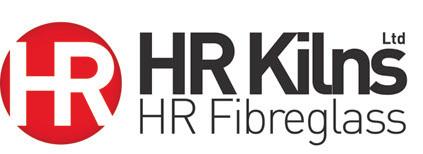
MANN+HUMMEL offers technologies that contribute to the significant reduction of particulate matter and NO2 – at rail environment hotspots as well as in underground stations. airfiltration.mann-hummel.com mark.chermside@mann-hummel.com +44 7874 872707
RISQS audited chartered land and engineering surveyors with 40 years’ experience measuring and mapping the railway infrastructure. survey@mw-sc.co.uk www.mw-sc.co.uk 07767 456196
Millcroft delivers complex and specialist projects, including highly sensitive scaffolding access, for hazardous rail environments that are often located on confined central London sites. sales@millcroft.co.uk www.millcroft.co.uk 020 8305 1988

Kelly Rail is a principal contractor to all major UK industry service providers, specialising in multi-disciplinary solutions including telecommunications, SISS, signalling, M&E, lineside civils and electrification HV & LV. info@kellyrail.co.uk www.kelly.co.uk 0208 424 0909
Railsy offers an unmatched variety of courses and programs across the rail industry, created for individuals or groups of all academic levels. info@railsy.co.uk www.railsy.co.uk 0330 043 1037

Created by Rail Business People for Rail Business People, the RBD Community offers an unrivalled rail business resource designed to help your business grow. rachel@railbusinessdaily.com community.railbusinessdaily.com 07985 148 201

Powercube design, build & maintain, scalable, secure, custom Containerised Critical Infrastructure Solutions. Referenceable across Rail, NHS & Defence sectors, our turnkey Containers are tailored to client’s operational requirements. Please reach out for an exploratory chat… contact@mavin.global www.mavin.global +44 (0) 845 612 1155
An established and trusted name in the industry, Radiodetection provides digital solutions and equipment to locate, survey, maintain and protect critical buried infrastructure. www.radiodetection.com rd.sales.uk@spx.com 01179 767776

Repay Solutions is an innovative software and technology provider delivering the first fully digital platform to automatically process both station and online purchased ticket refunds for train operators. info@repay.solutions www.repay.solutions 020 3026 2468

With extensive expertise in the rail sector, a robust supply chain, and added value solutions, we keep your operation running efficiently, cost-effectively and legislatively compliant.


customer.connect@rexel.co.uk www.rexel.co.uk +44 (0)333 400 7917

Our core focus is to provide intelligent solutions and support to our customers throughout the life cycle of their railway, heavy construction and infrastructure project to increase productivity and quality. sales.geo@sccssurvey.co.uk www.sccssurvey.co.uk 01480 402250

Schweizer Electronic is the market leader in Europe for on track automated protection on busy railways for both passenger and freight lines. info.seuk@schweizer-electronic.com www.schweizer-electronic.com +44 (0)1827 289996
UK wide supplier and service provider of rail, material handling and plant equipment into the rail, scrap, waste and demolition sectors for over 20 years.


www.tdlequipment.com sales@tdlequipment.com 08444 99 44 99

VDS Rail is an Italian manufacturer of highly reliable onboard networking Ethernet devices and human-machine interfaces (HMIs) for the rolling stock industry. www.vdsrail.com felix.borremans@vdsrail.com +32 475 43 47 29



voestalpine Turnout Technology UK Ltd. is the leading partner for providing railway infrastructure system solutions. The company manufactures switches, crossings and associated parts for track installation. sales.ttuk@voestalpine.com www.voestalpine.com/railway-systems +44 1302 746 942

Hull Trains’ Mike Manders was a knight in shining armour, but not on horseback, when he completed the recent London Marathon, raising nearly £3,000 for the charity Action for Children.

He completed the 26.2 miles wearing his 15th century suit of armour, weighing in at a hefty 5.5 stone, in seven hours and 18 minutes – missing out on a Guinness World Record by less than half an hour.
“I didn’t break the record, but I am still so pleased with how the day went. I’m feeling very sore now and I have the scabs and bruises to show, but it was an incredible day,” he said.
“The crowd gave you the boost you needed exactly when you needed it, and the support was overwhelming, and I’ve already put my ballot in for next year.”
Since completing the marathon, Mike has decided to retire his famed suit of armour and donate it to the charity’s fundraising museum
in the hope that it can inspire somebody else’s fundraising ventures.
“I’m glad the suit has found a loving home with Action for Children in its museum,” said the on-board manager.
“I’d never say no to going for the record again, but next time I take on the challenge, I would definitely need to do it in a custom-made suit to avoid the challenges I had this time round. Of course, I would never do the marathon or any fundraising without some kind of fancy dress, it wouldn’t be me without it!”
Mike has been on a remarkable journey since he took up running three years ago – at one time shedding a third of his body weight as he focused on improving his health and wellbeing. He has since participated in a host of charitable activities and has received praise from Action for Children.
“They’re a great charity to work with and I’m hoping the suit can act as some inspiration for future fundraisers.
Martijn Gilbert, managing director of Hull Trains, said: “We are all so impressed with Mike’s efforts and we’re so proud to have him as part of our Hull Trains team. We’ll all be behind him for his next marathon and any future fundraising tasks he sets his sights on.”
Hull Trains’ Mike the Knight has completed the London Marathon, just missing out on a Guinness World RecordI would never do the marathon or any fundraising without some kind of fancy dress, it wouldn’t be me without it!
When it comes to manufacturing concrete for the rail industry, Anderton go a lot further. Our cost effective, bespoke concrete offering means a client’s very own concept can be both designed and built in-house at the Anderton factory. With a proven track record for bespoke solutions, our experienced team has successfully completed projects this year for Feltham Resignalling, Werrington Separation, Durham Coast and Birmingham New Street to name but a few. What’s more, our own on-site mould manufacturing facilities ensures quicker lead-times, better availability and saves you time on site. So, if you’re thinking bespoke, speak to Anderton.





